Site Specific Intervention
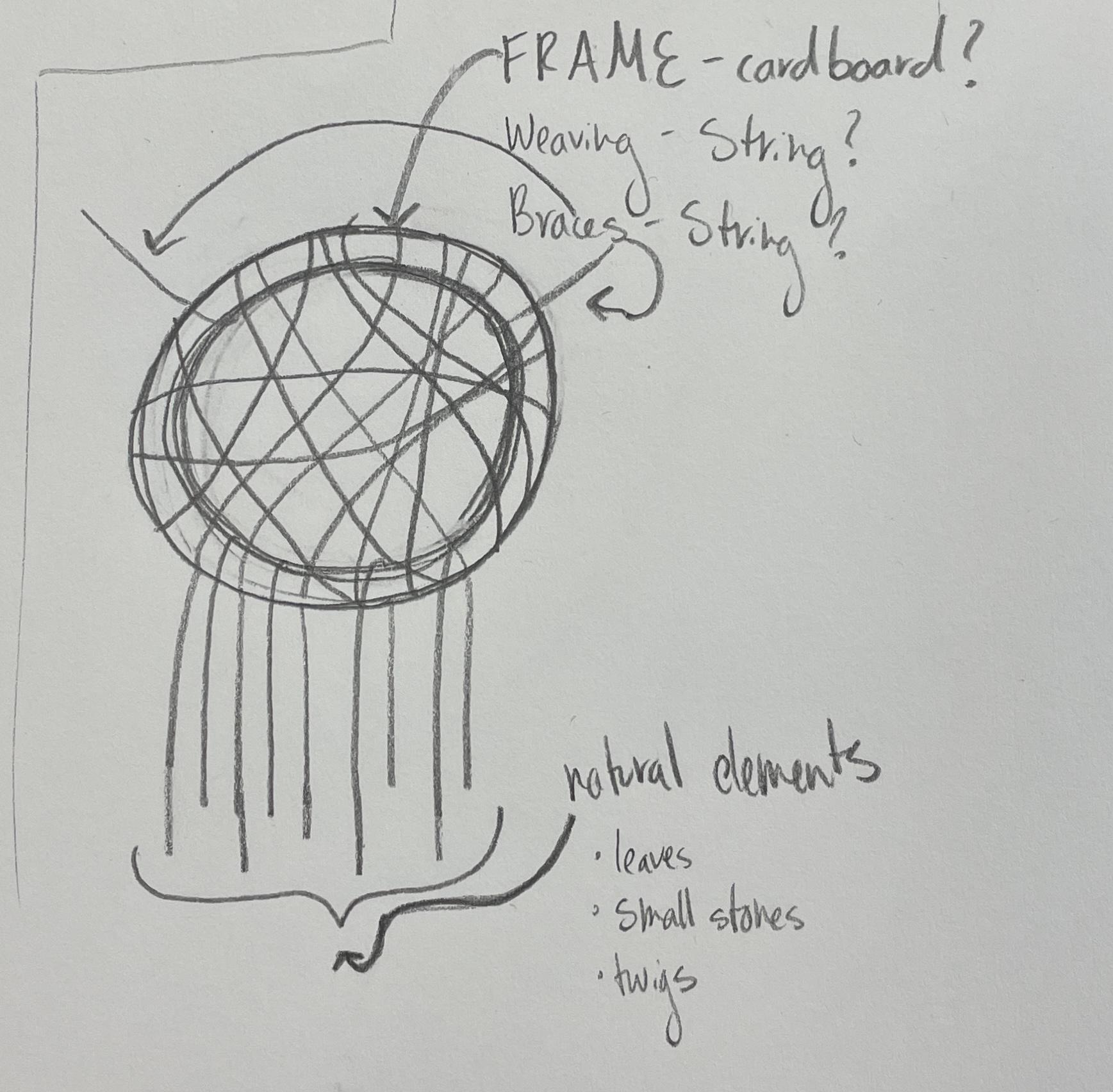
The site specific intervention project focused on the theme of connectivity. Specifically, connecting to the campus to each other and nature. To show connectivity the group decided to create a dreamcatcher. To create the dreamcatcher, thread was wrapped around a cardboard circle and then tied to the tree. The overlapping of the strings represents the overlapping of the dreams of students on campus. Together, the strings work together to hold each other up, just like how the students at Thomas Jefferson University work together to achieve their dreams.
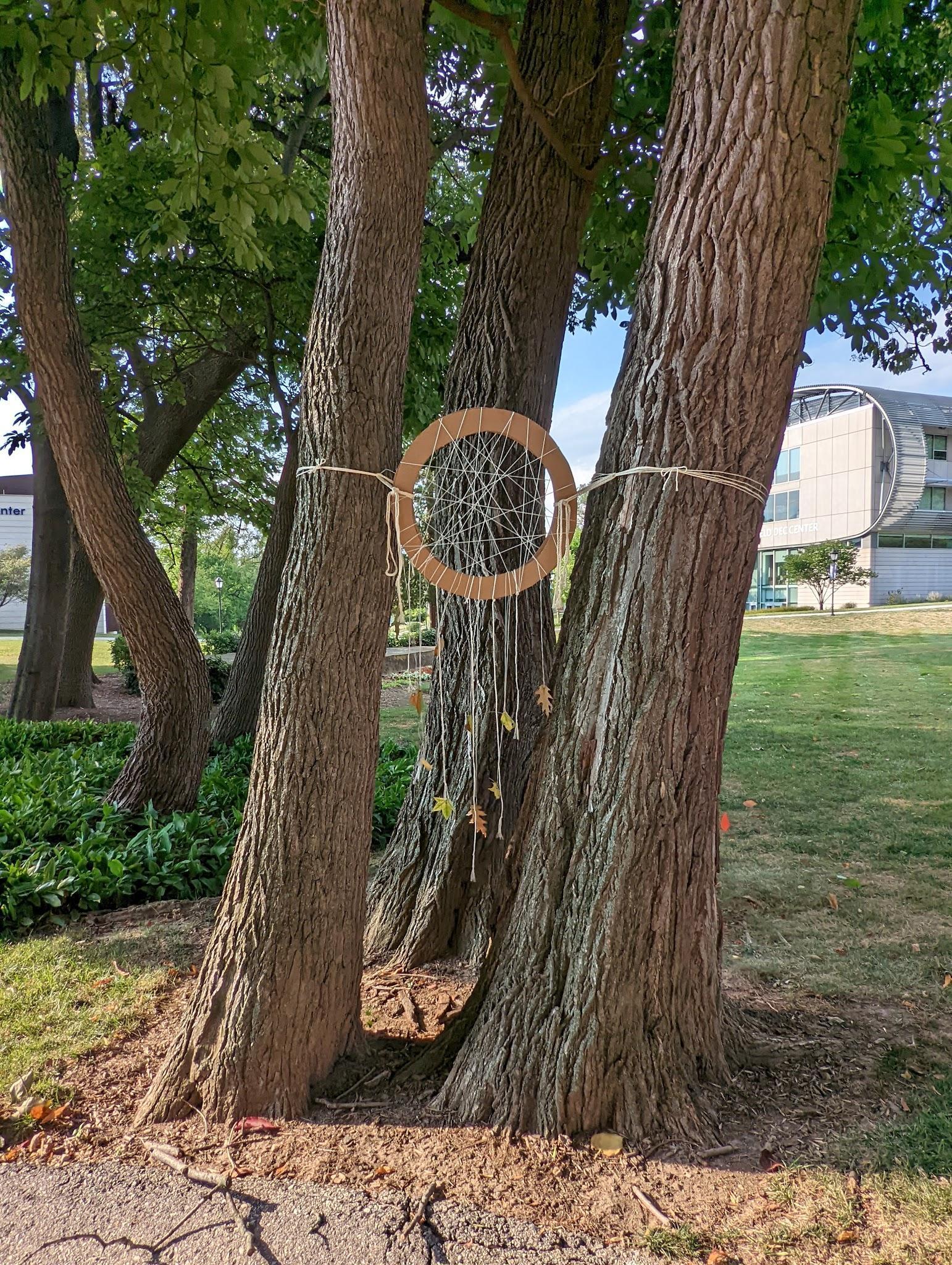
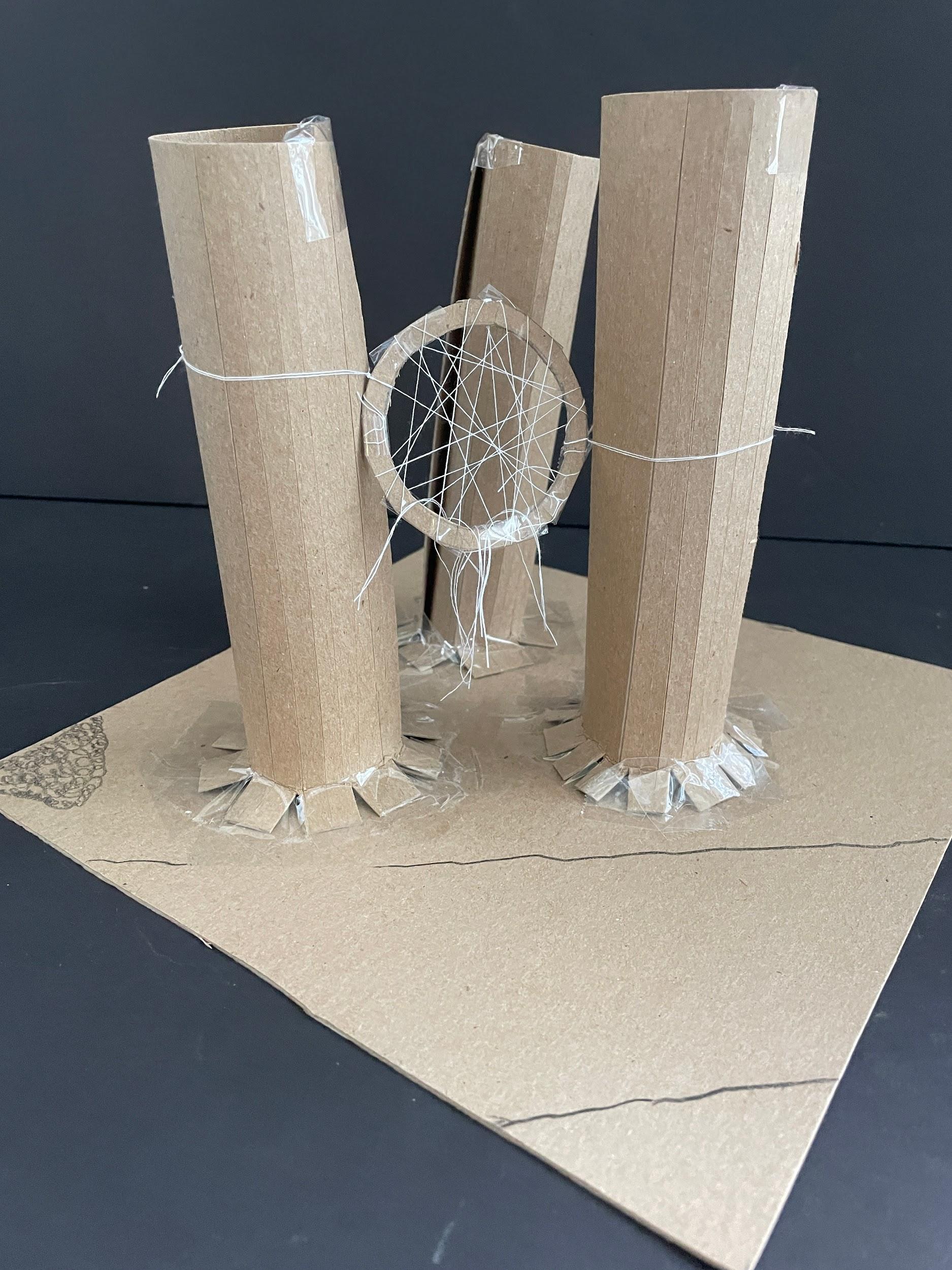
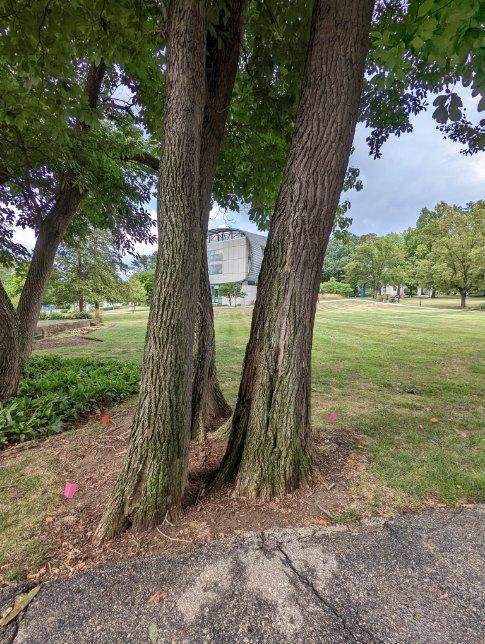 Group Members: Violet, Jake, and Jaden
Group Members: Violet, Jake, and Jaden
Topological Transformations
The topological transformation studied the form and structure of an object (in this case a soap bottle). There were four ways to show the form of the bottle: horizontal stacking, vertical stacking, interesting or “eggcrate” and a method of choice. The first three methods were created from cardboard, while the last model was of paper ache. Paper mache was chosen to be able to easily create the various grooves and form of the bottle. Additionally, axonometric and orthographic drawing were created to represent the soap bottle.
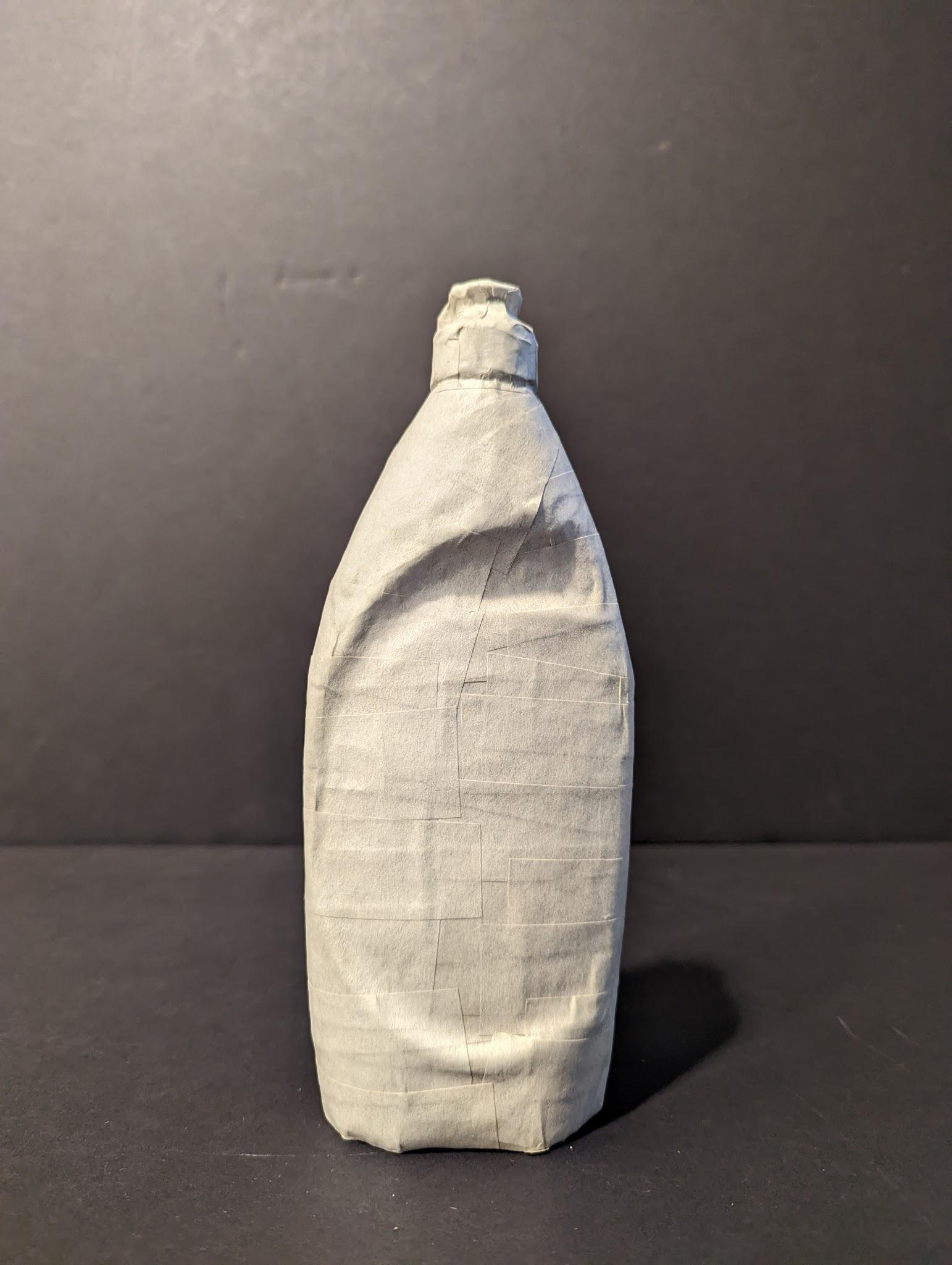
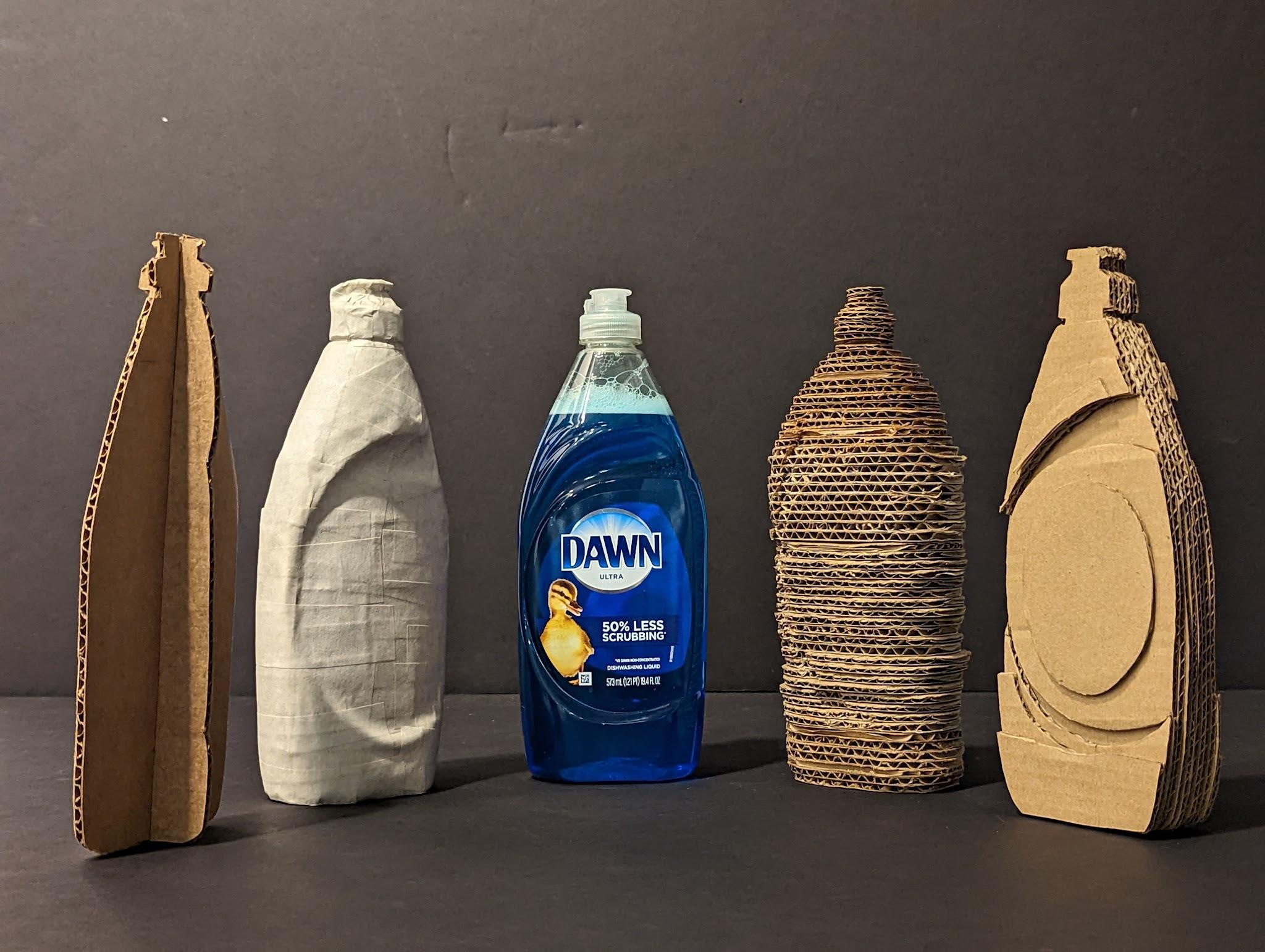
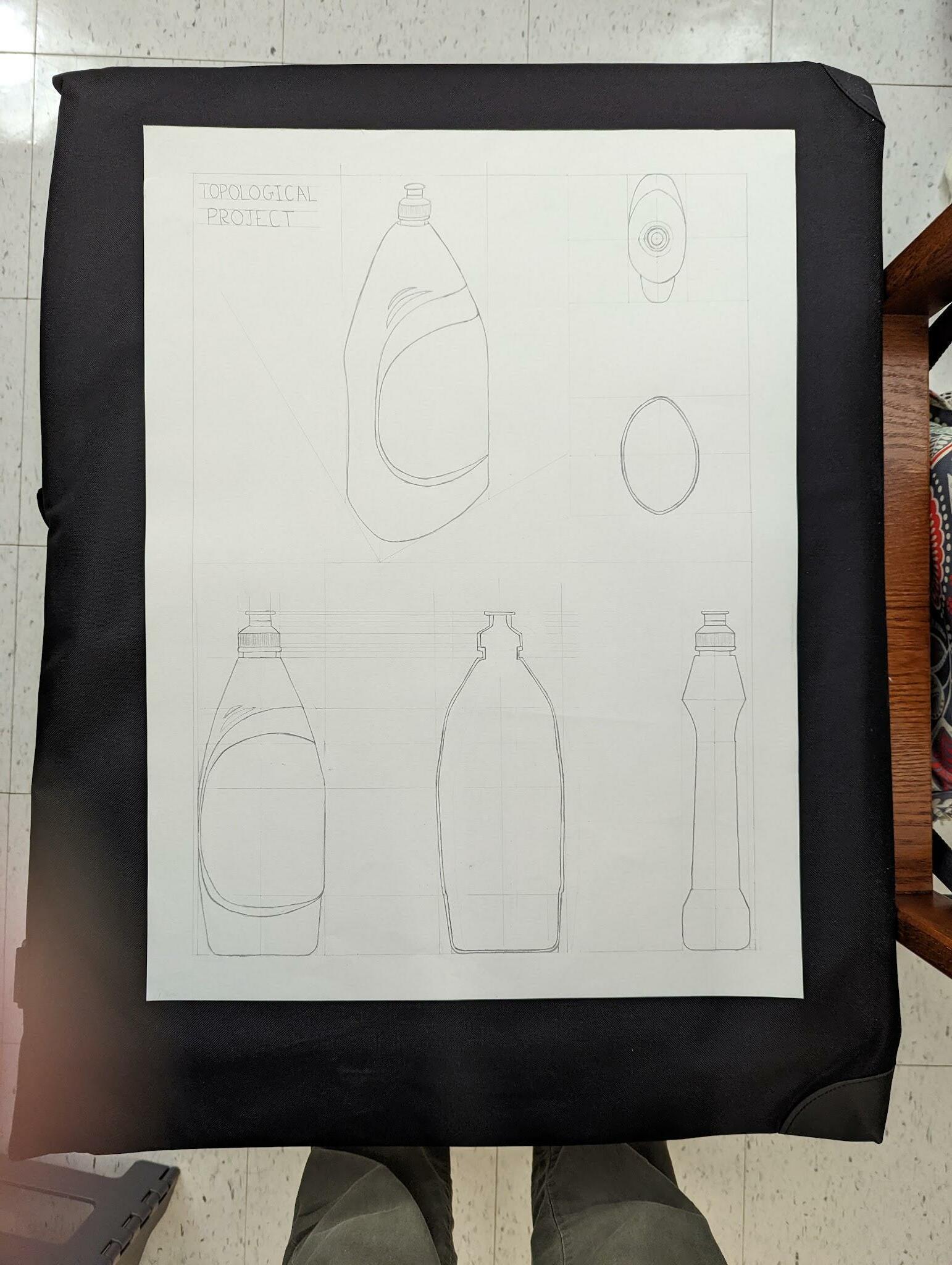
Creating Color, Pattern, and Texture
This project consisted of exporking three fields: pattern, color and texture. The first panel is creating pattern from a cut out the stamp. The symbol chosen was a diamond. The next panel was to incorporate color to the pattern. To go along with a cool theme, many blues were chosen along with an orange to add an opposite color. The last panel was to fold paper to create texture that went along with the previous two. The paper was folded into diamonds strung together to incorporate the symbol in the first panel.
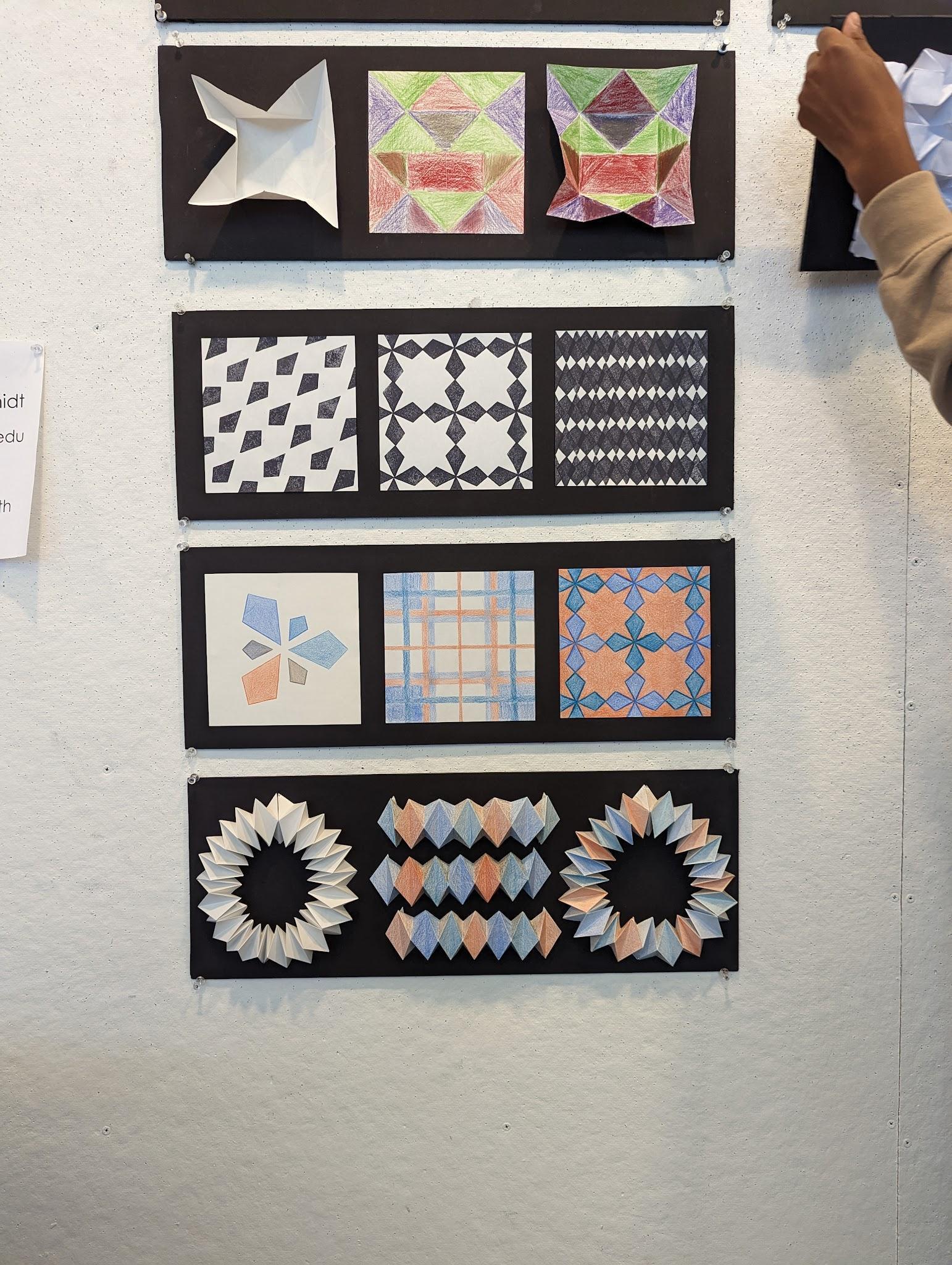
Visual Hierarchy
For this project, there is an exploration of the design and creation of a textile. The textile chosen was Kilim from Turkey. Many analysis drawing were used to understanding the hierarchy, contrast, and shape of the pattern. Then, using the diagrams, a 2D model was created to show the understanding of the composition of textile. After the creation of the 2D model, being the process of the 3D model. This required some abstract thinking. Using the triangle as the main shape, the sides of the model incorporated various abstractions and patterns. Also, similar colors were used to further connect the textile and model.
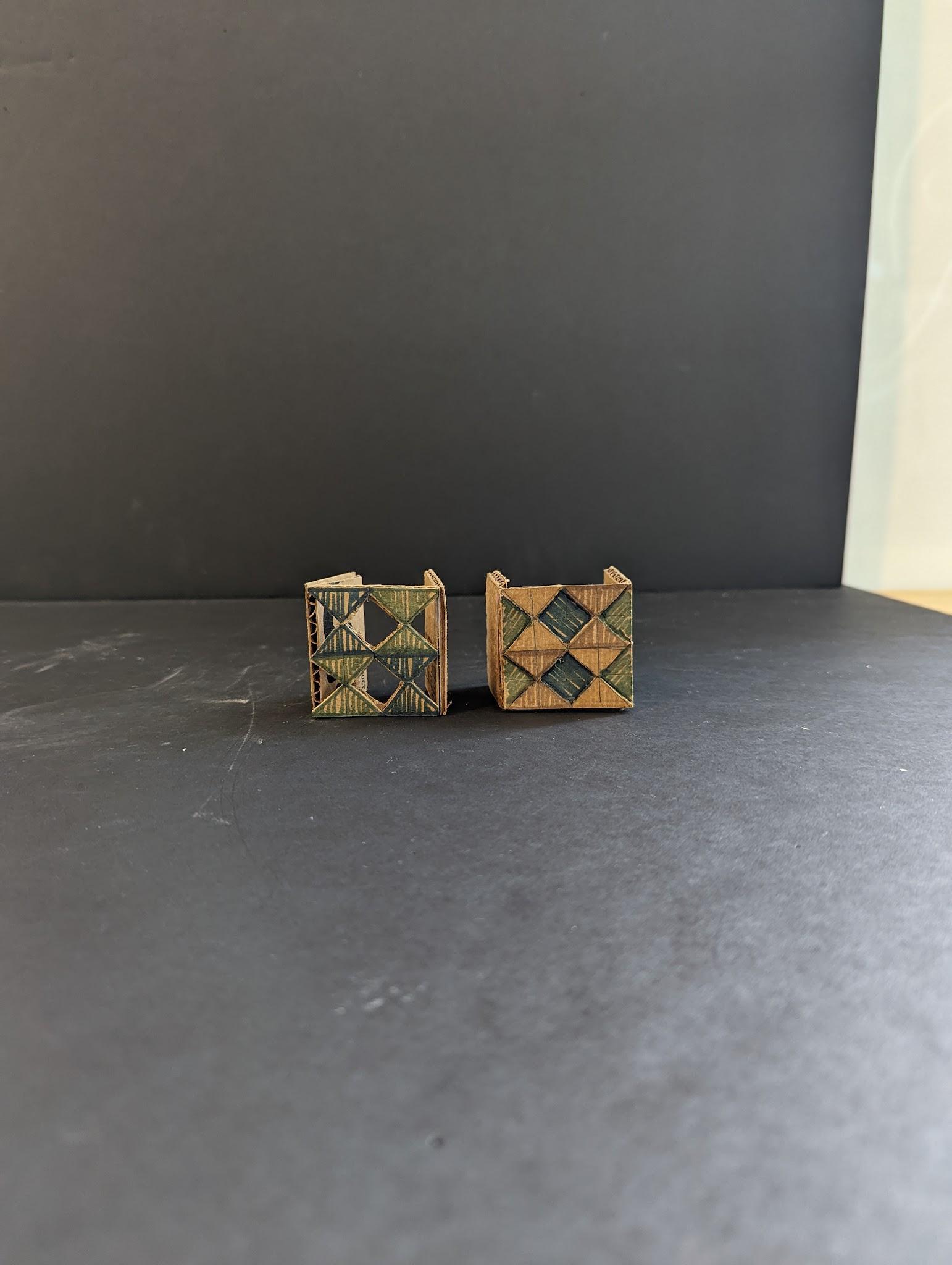
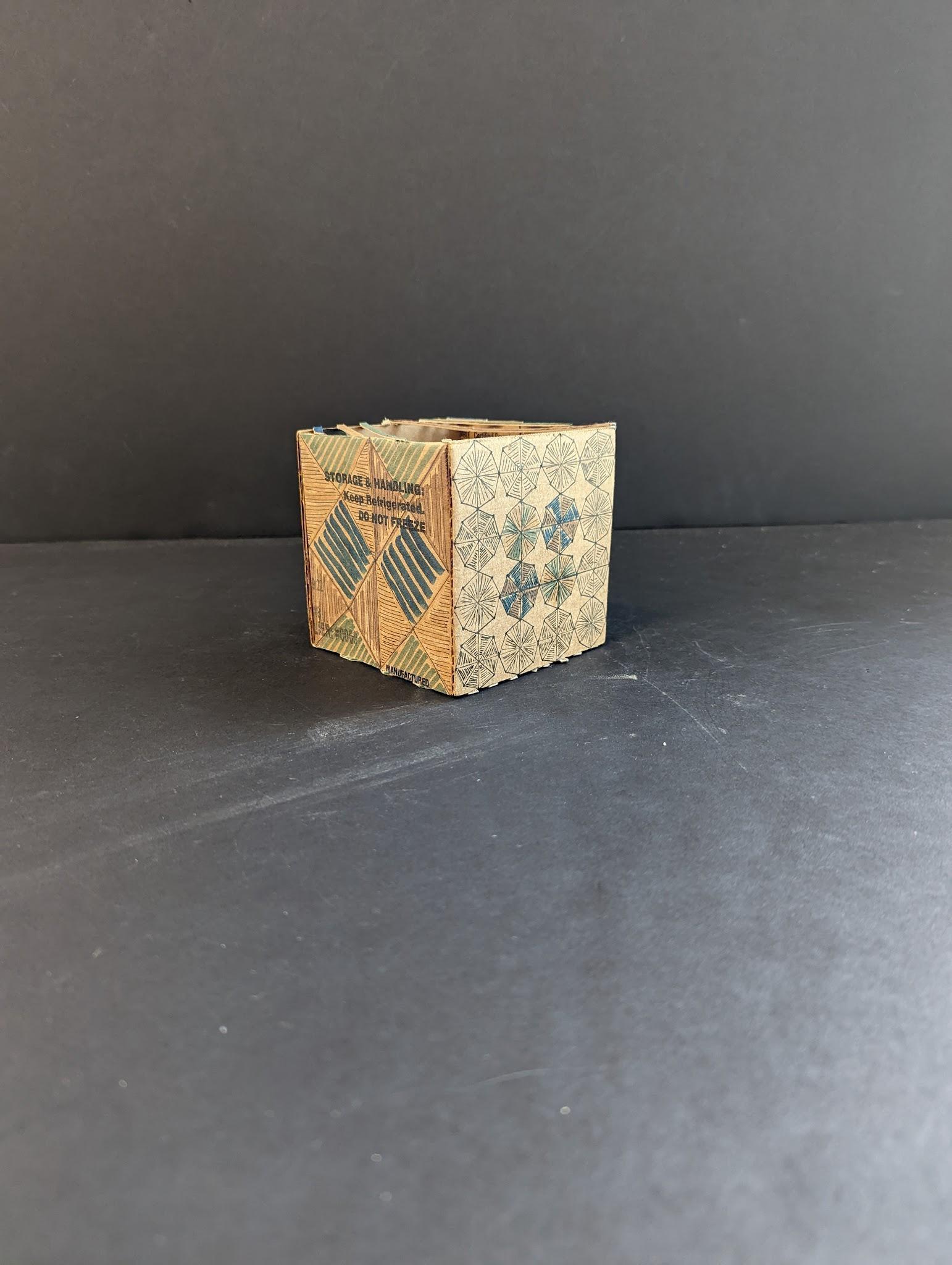
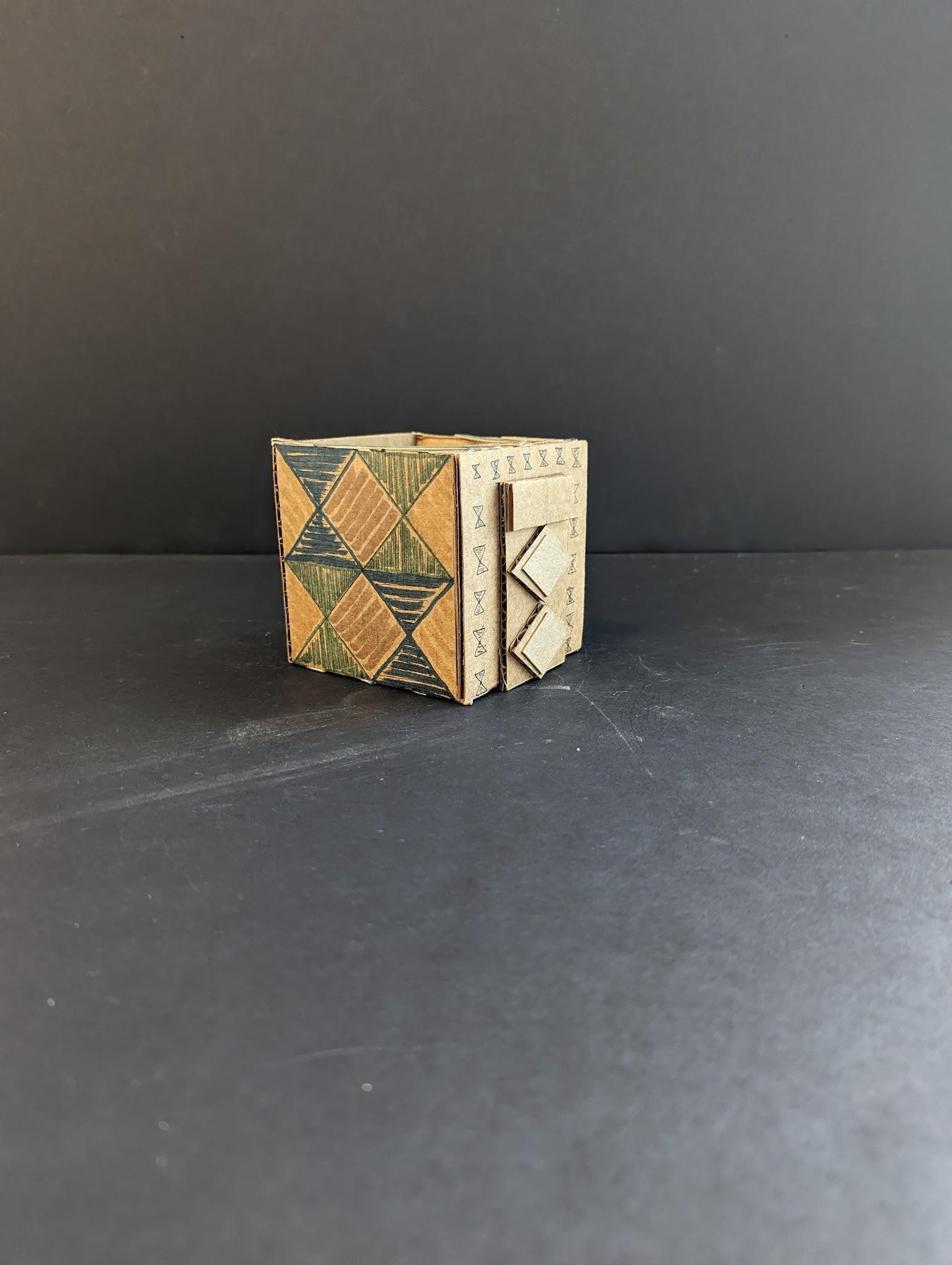
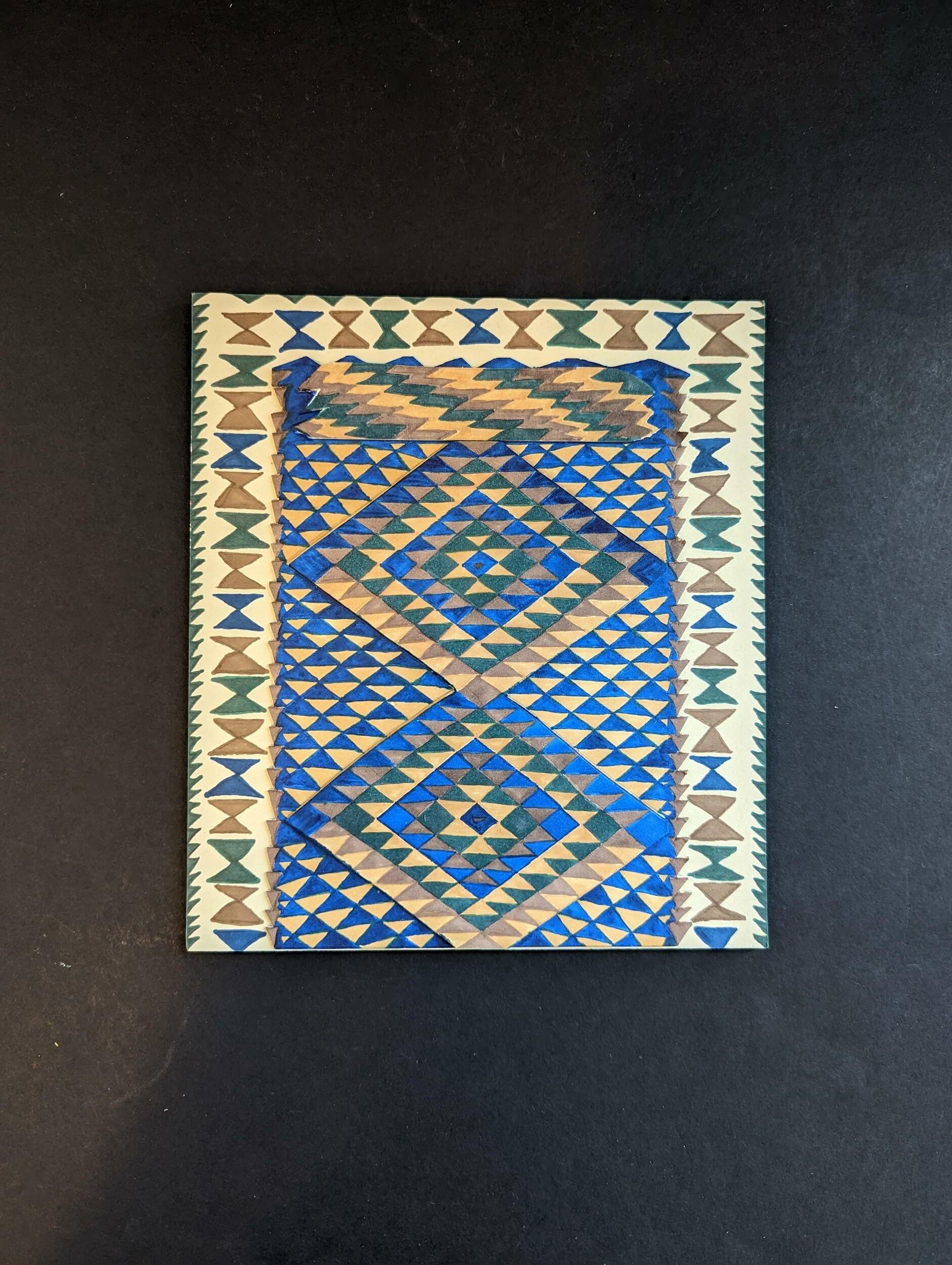
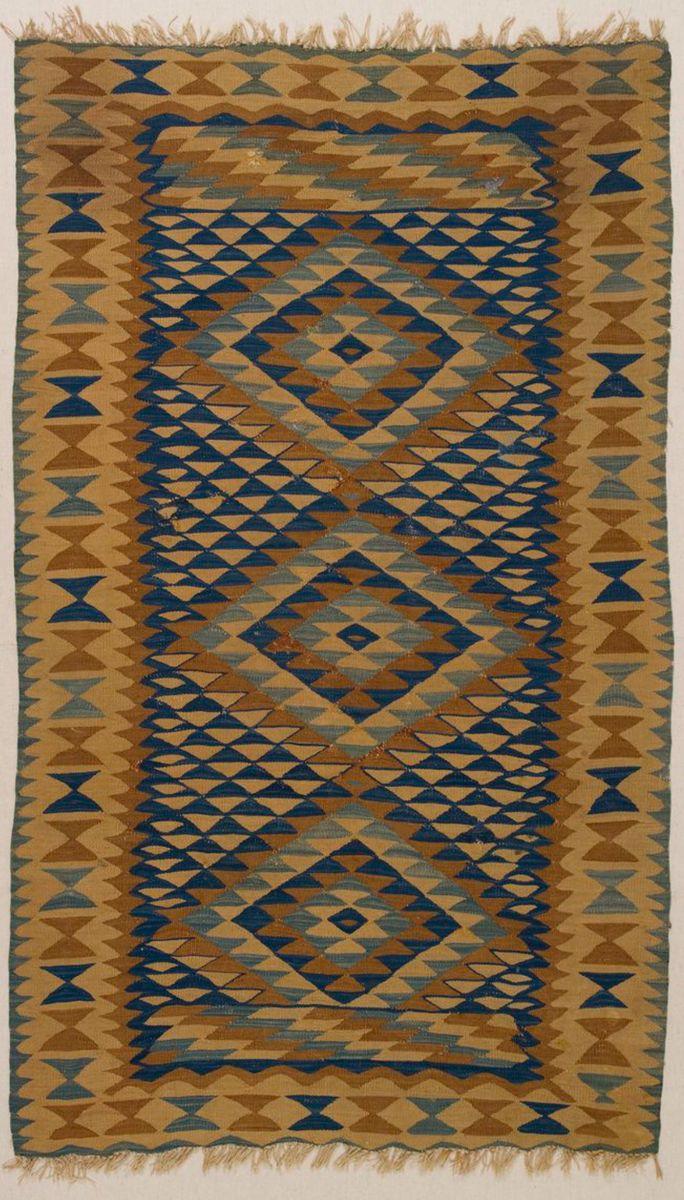
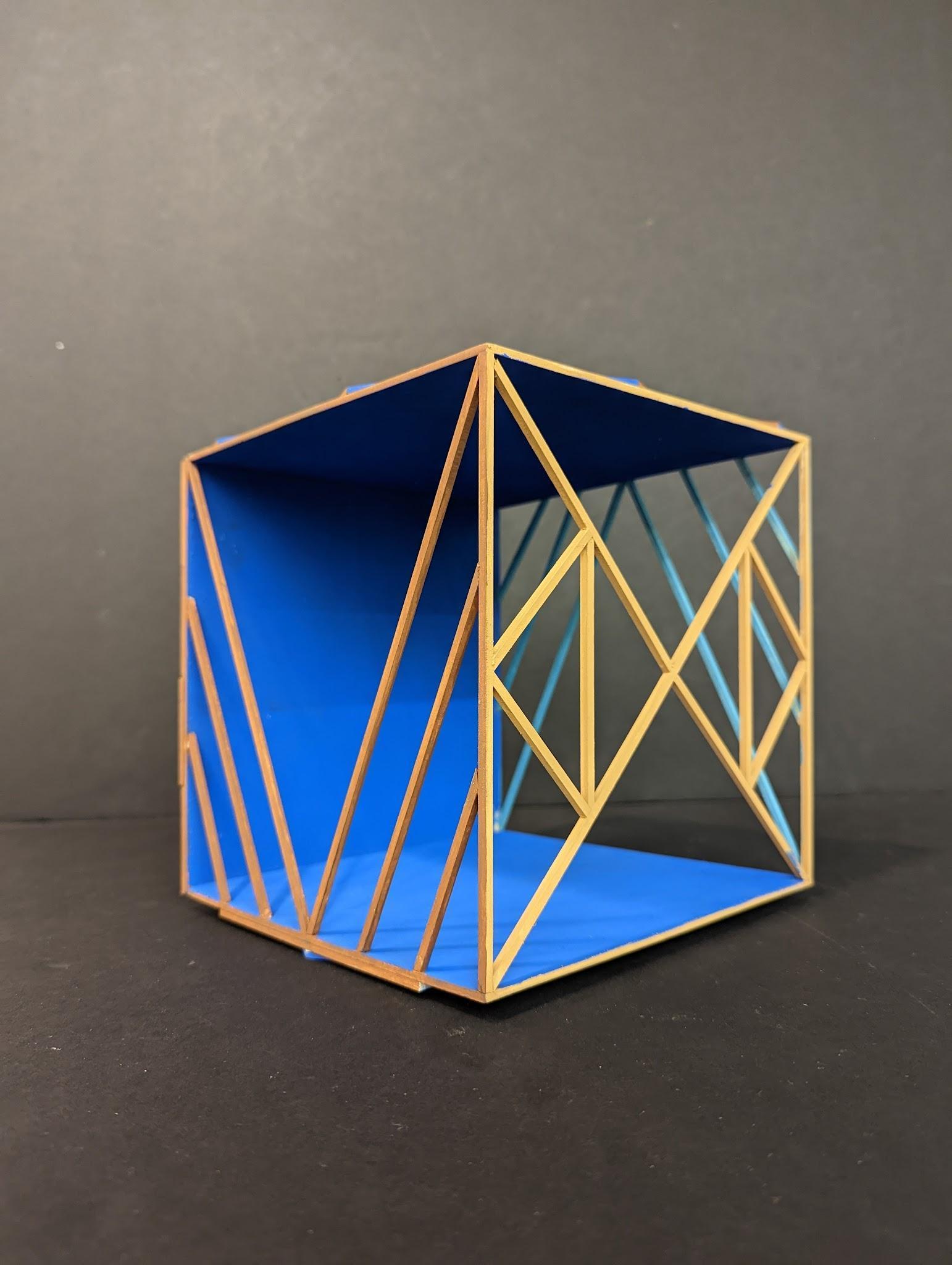
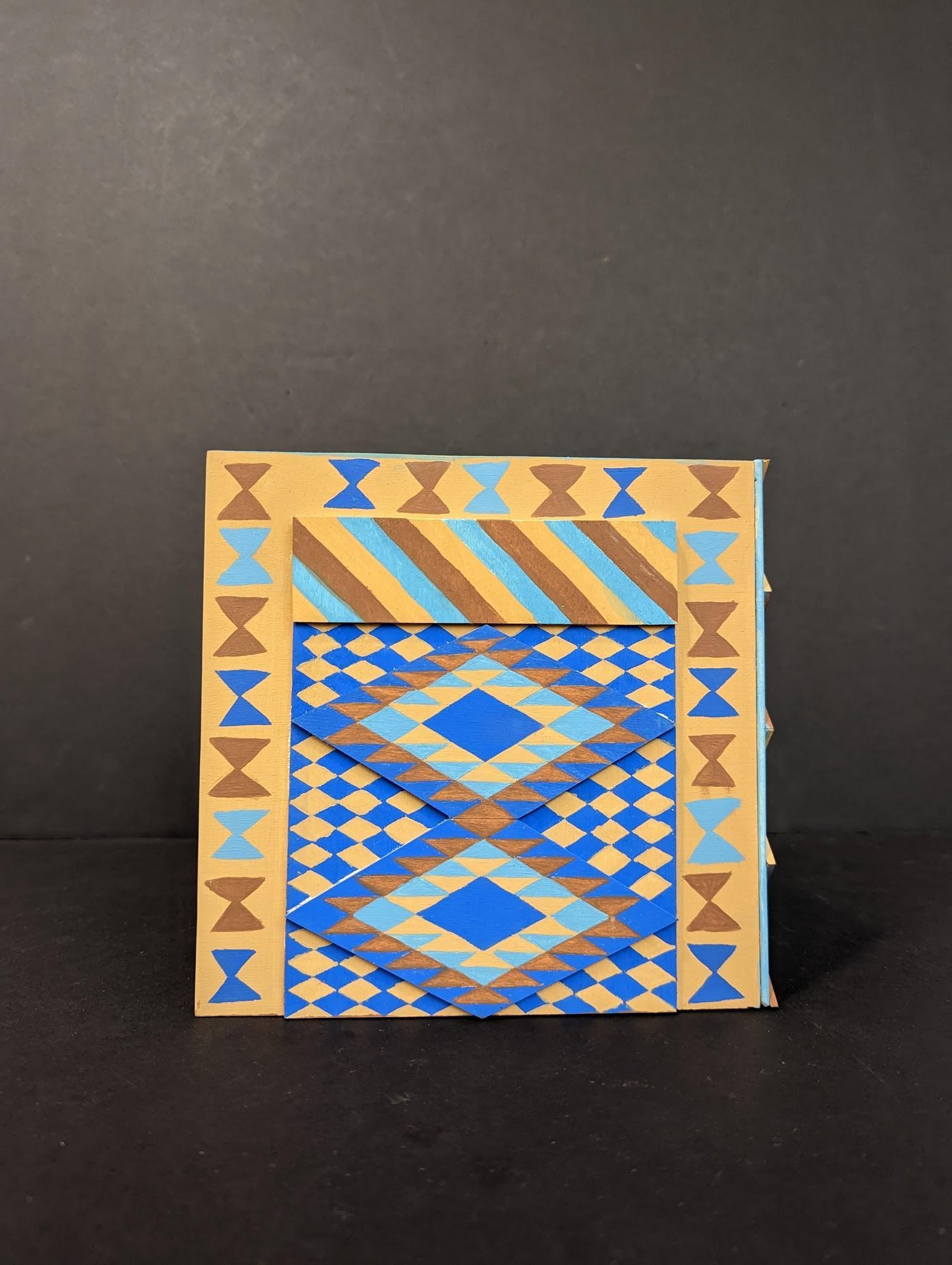
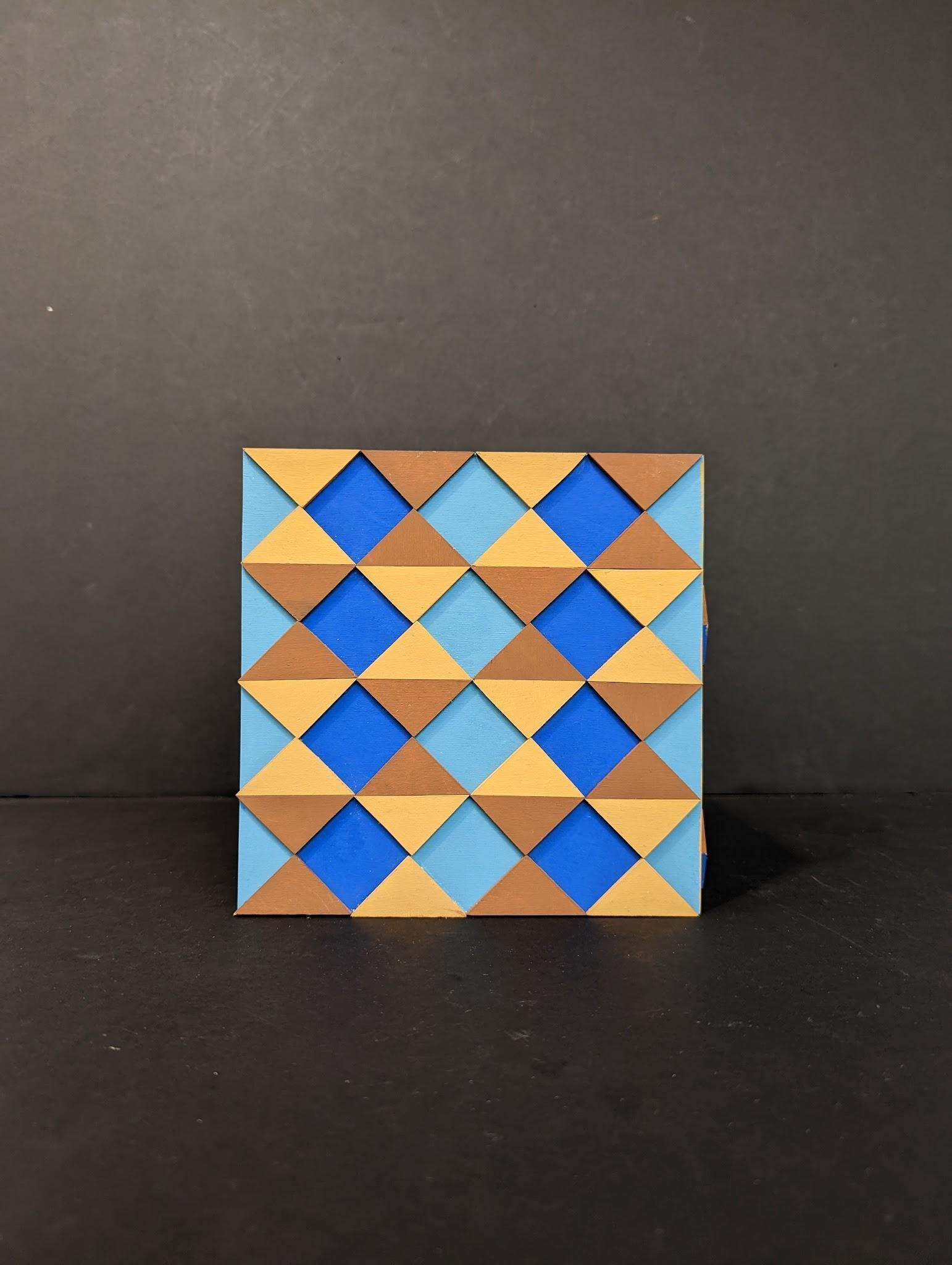
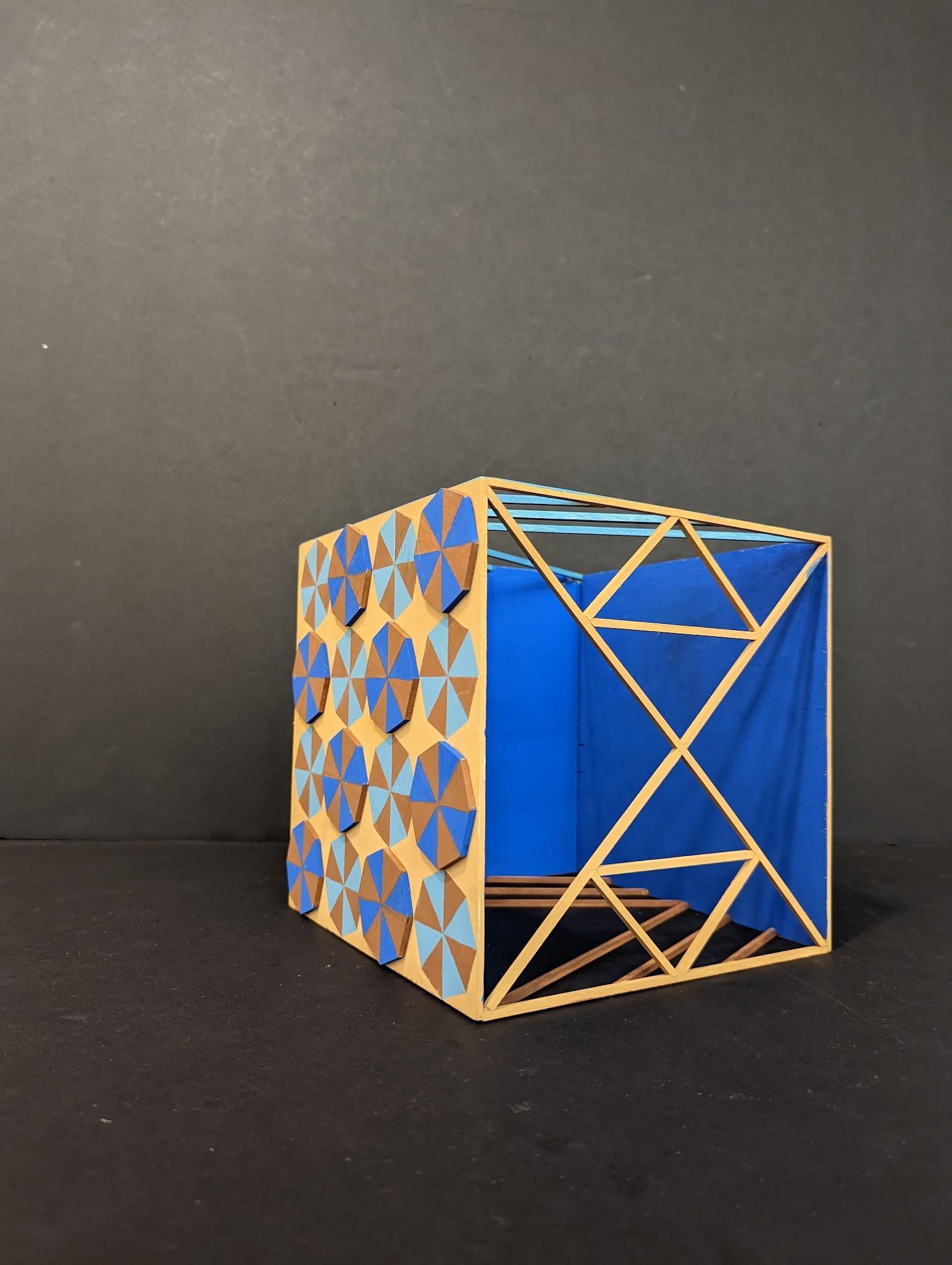
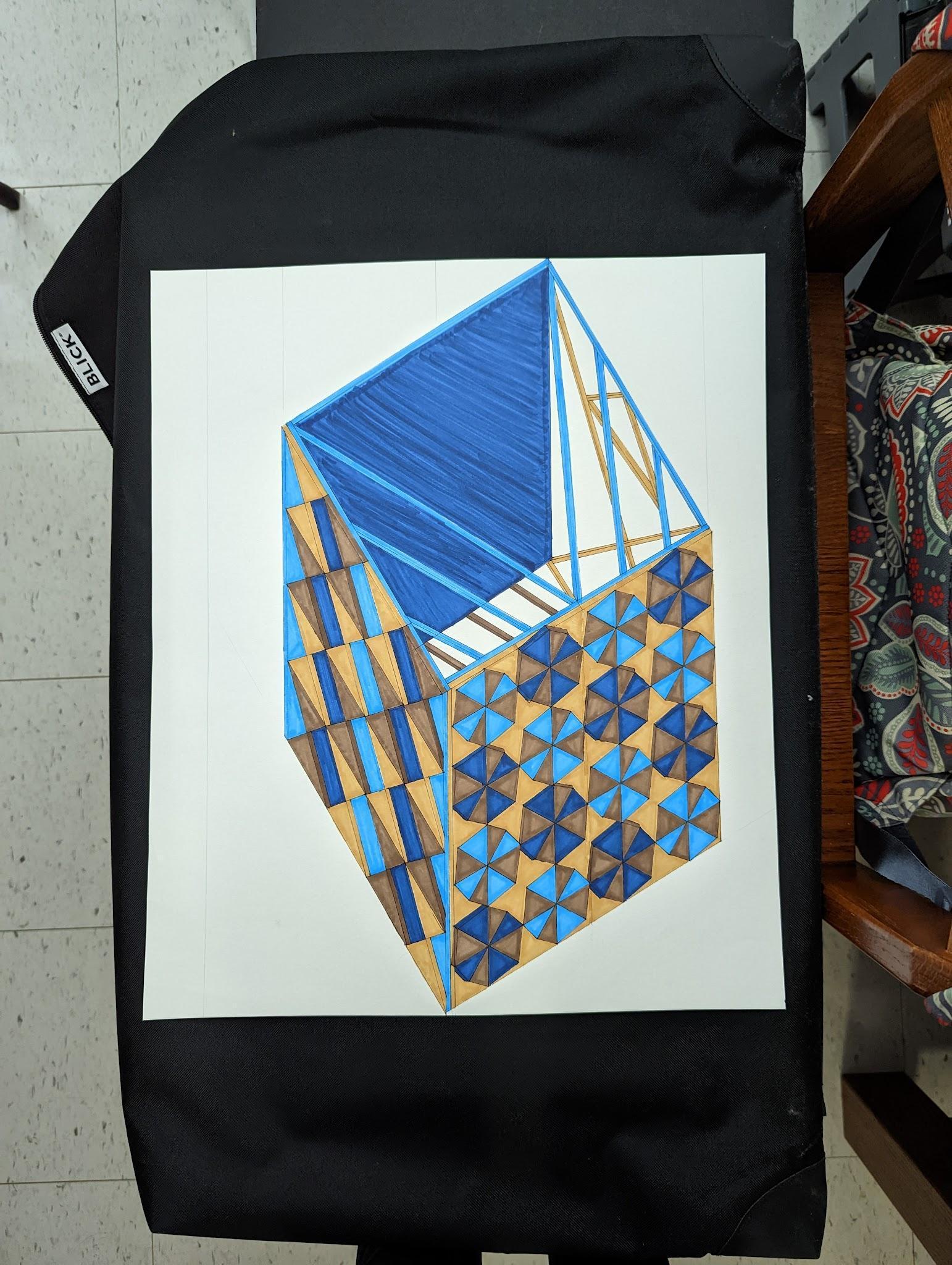
Creating a Place
This project is taking a painting and creating a space with it. The painting chosen was the “Eiffel Tower” by Diego Rivera in 1914. To understand the painting, many analysis diagrams were created to see the individual components and the artist style of the artist.The main sylte was cubism, thus there were many overlapping geometric shapes. Using these diagram a bas relief was created. The relief incorporated the main elements of the painting which was the focal point, the foreground and background. The bas relief was then used to create a site model of the city.
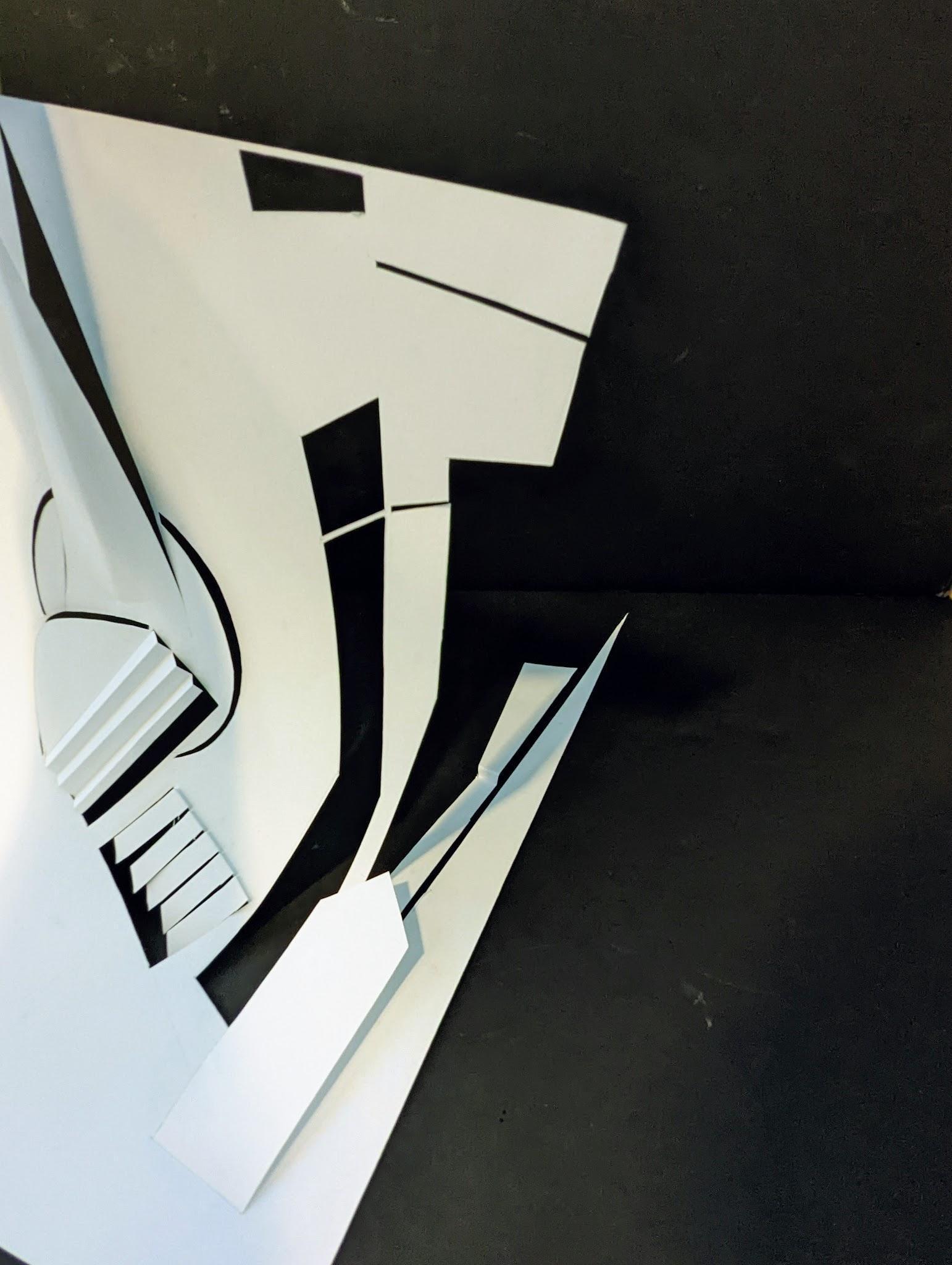
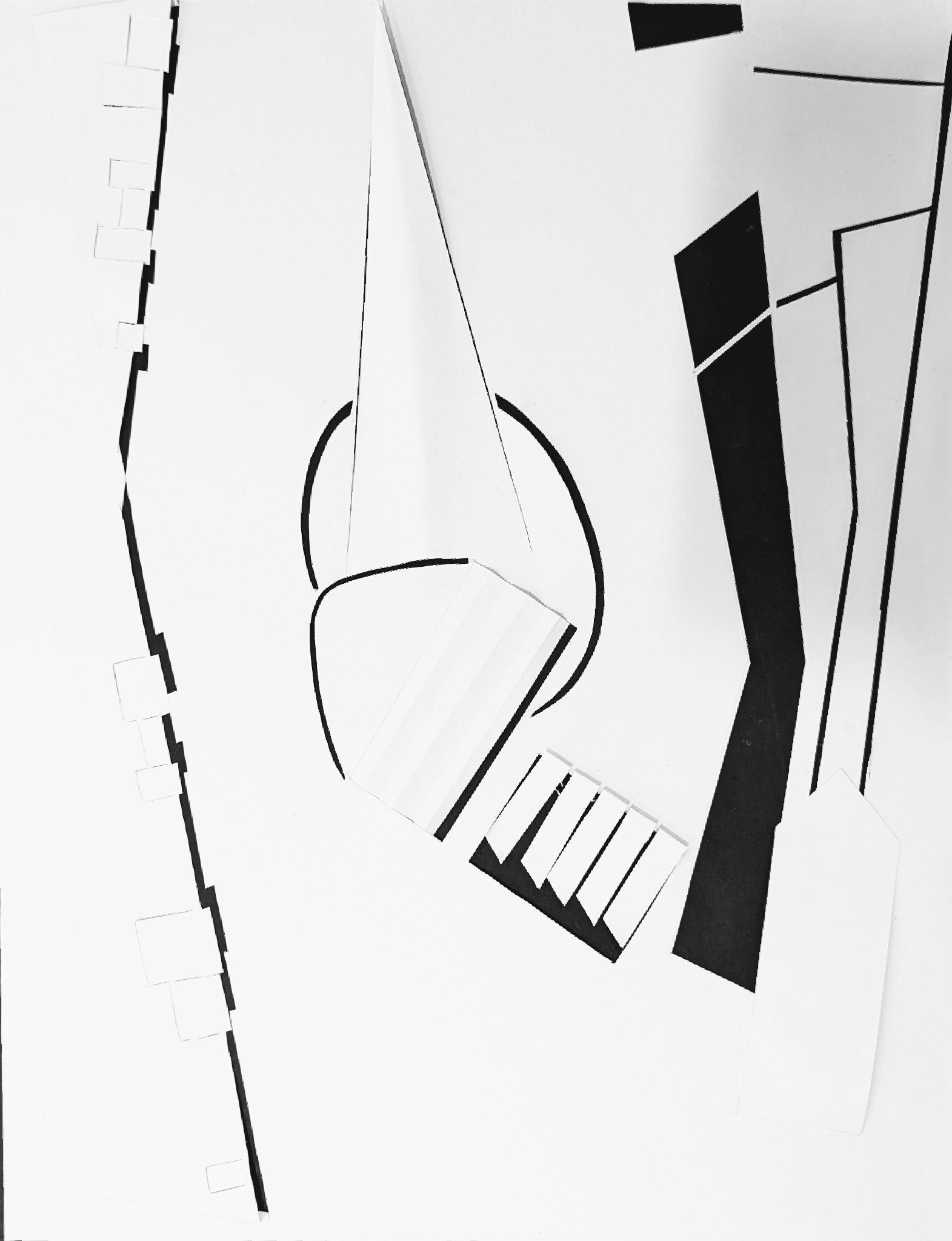
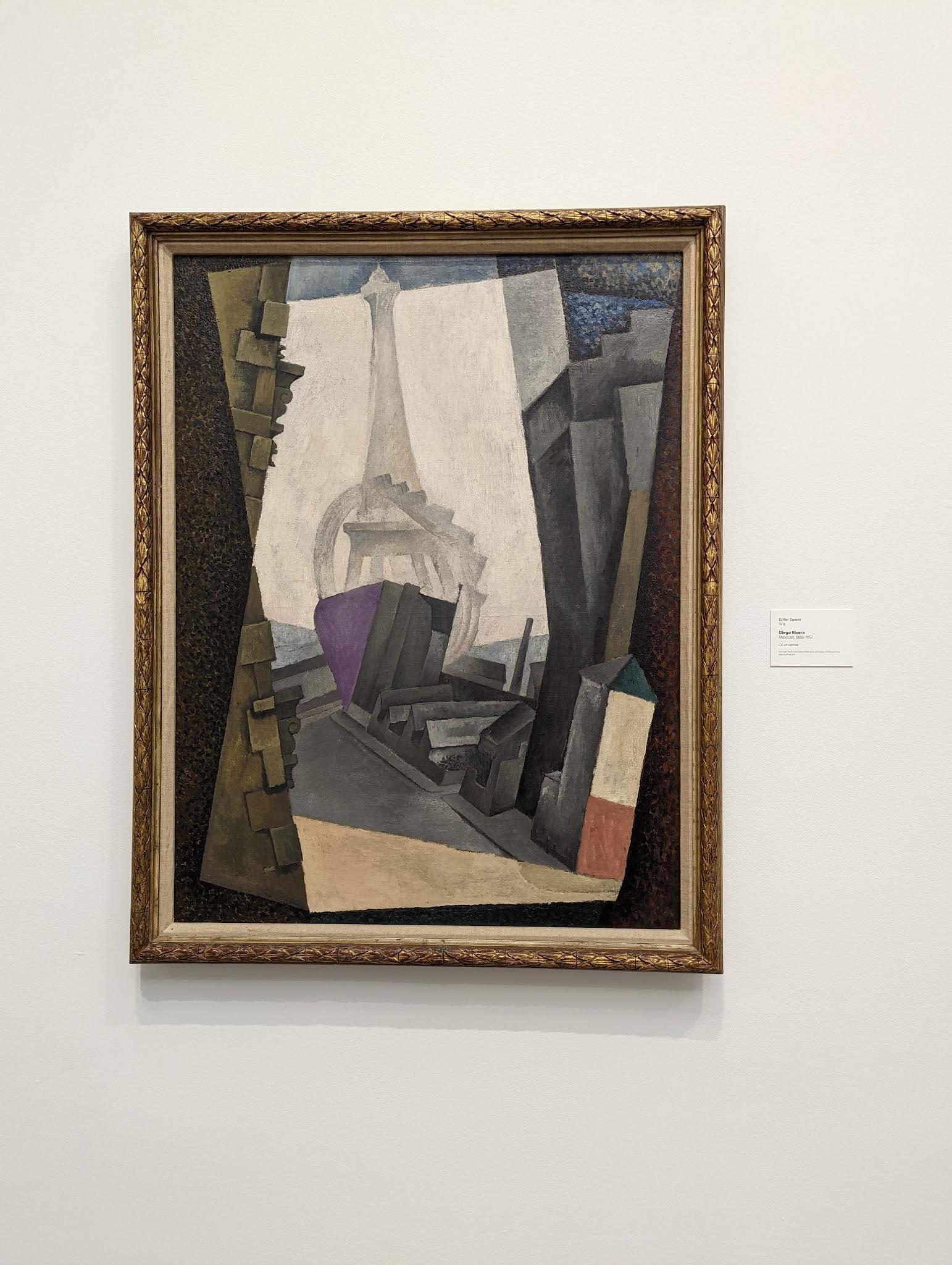
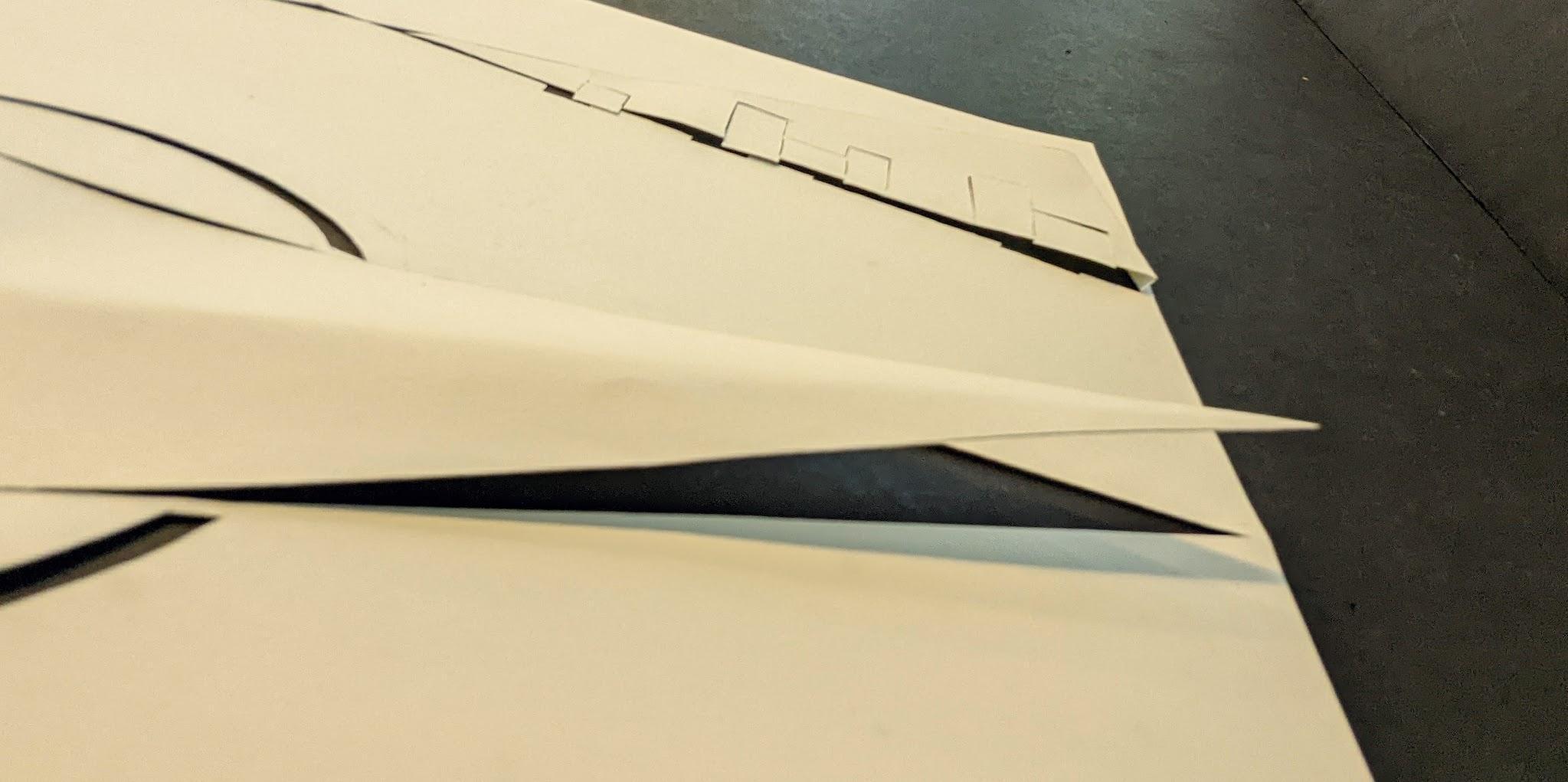
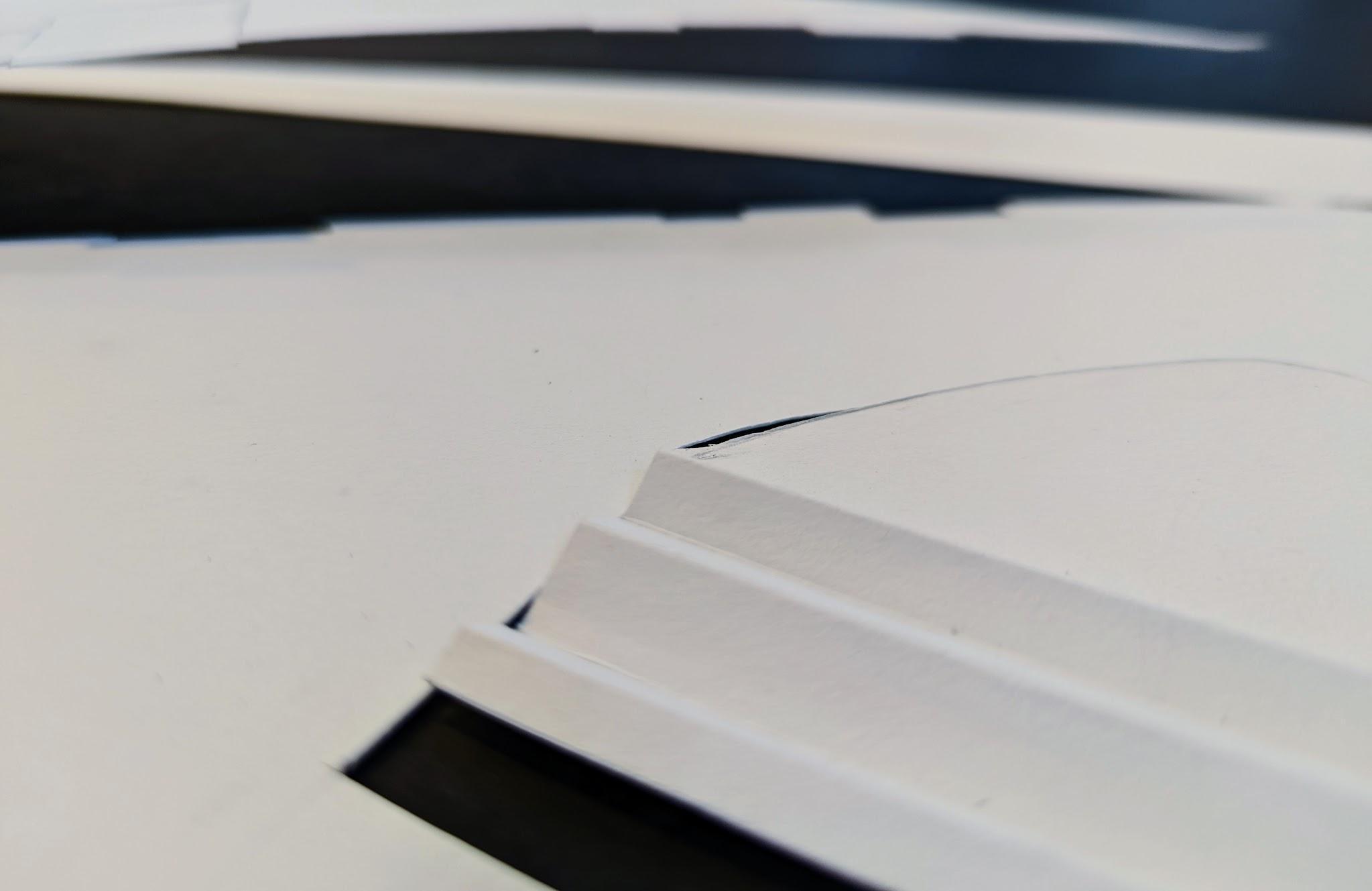
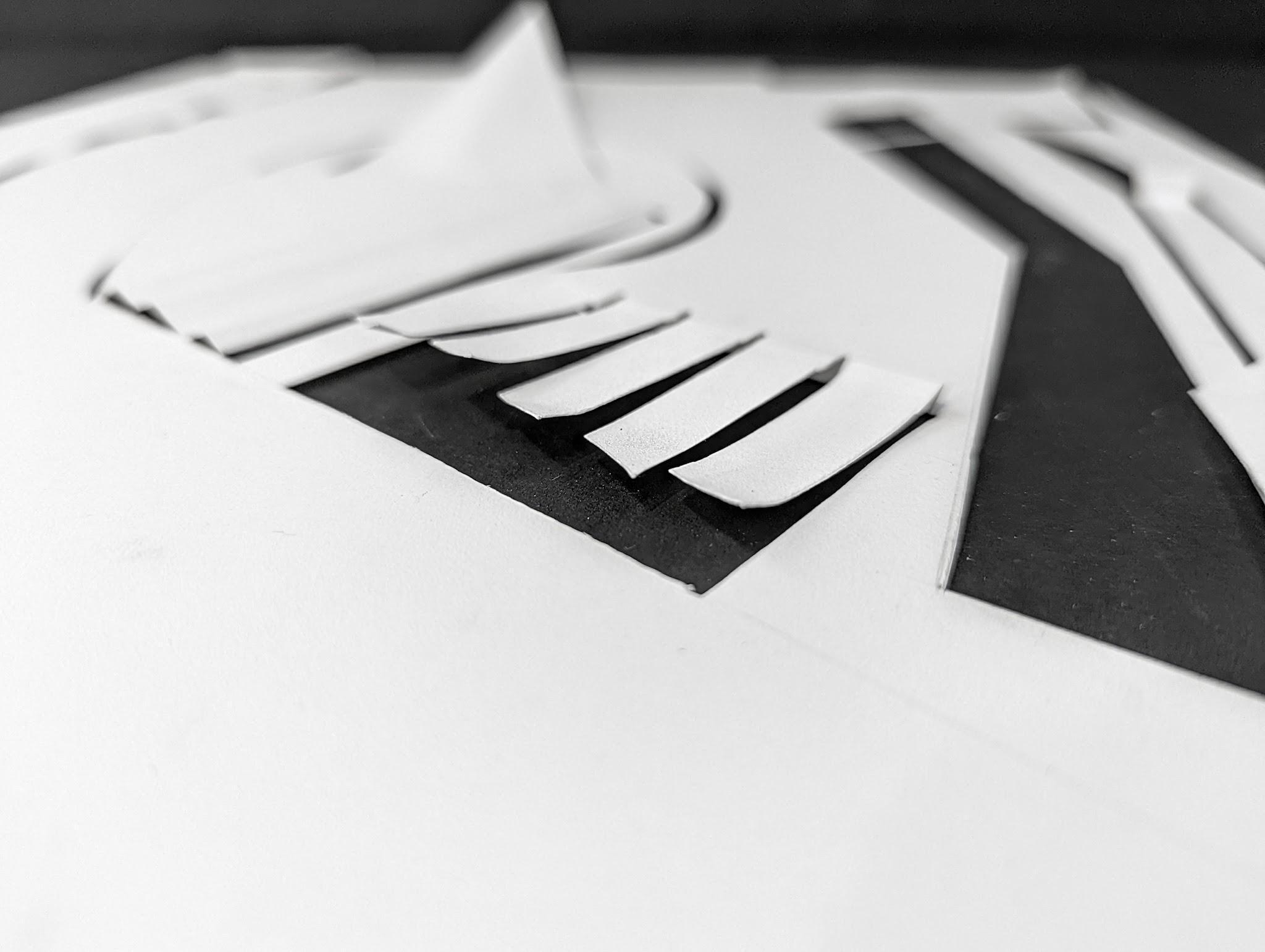
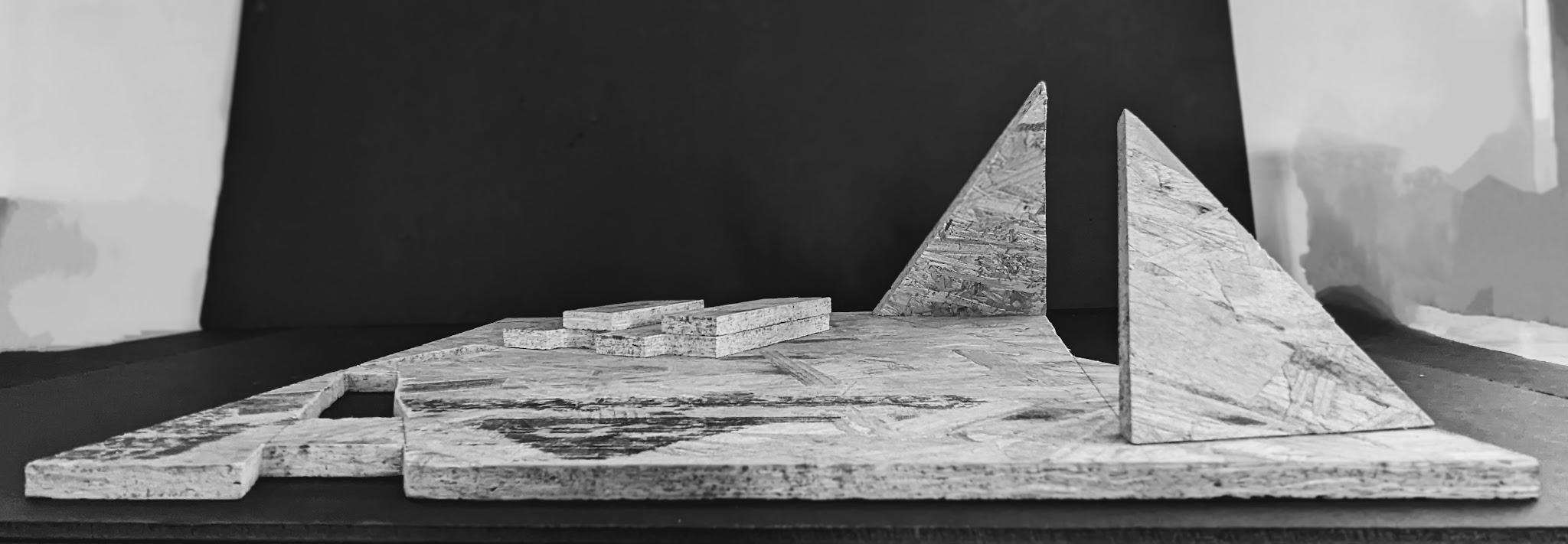

Making Space
From the wooden model in the previous project, a new site model was created. Using a city from the “Invisible Cities” a new plan was constructed. Eudoxia is a city with many ups and down and winding streets. However, there was a sense of order and design within the city. The model was created to replicate this effect organized chaos. Using various structure both above and below, the city had its own quirkiness of being able to flip around depending on how what the city was showing for that time.
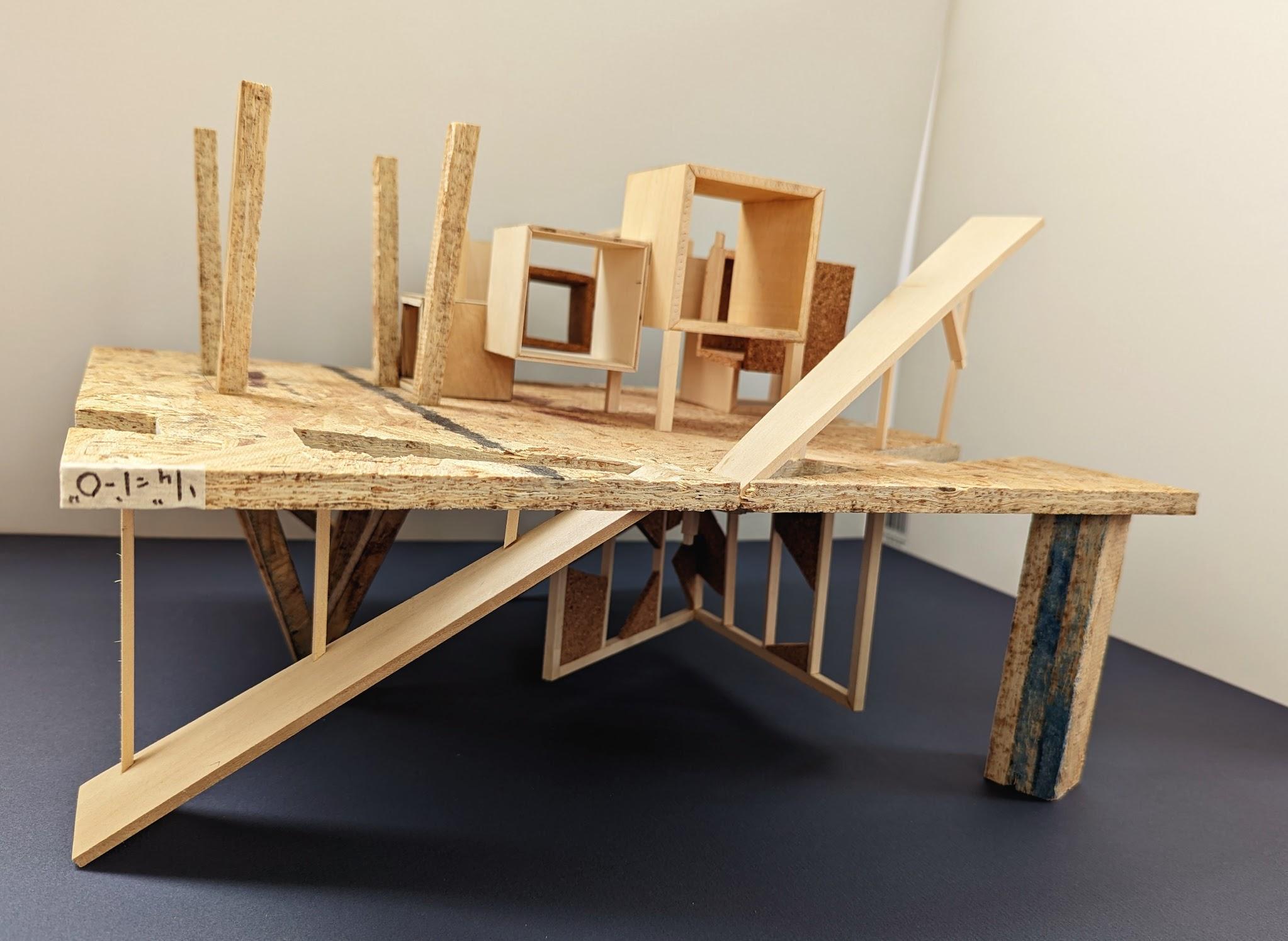
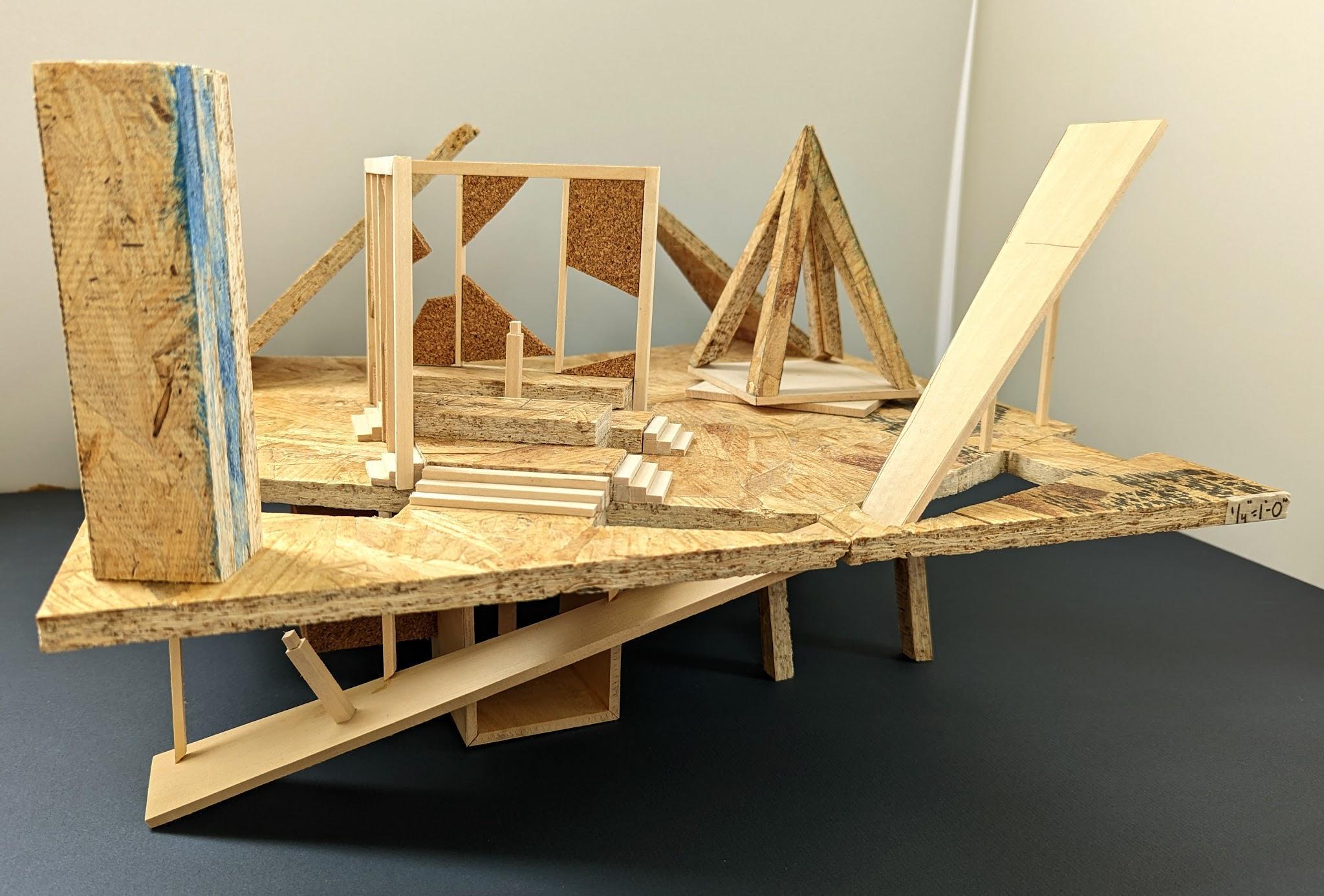
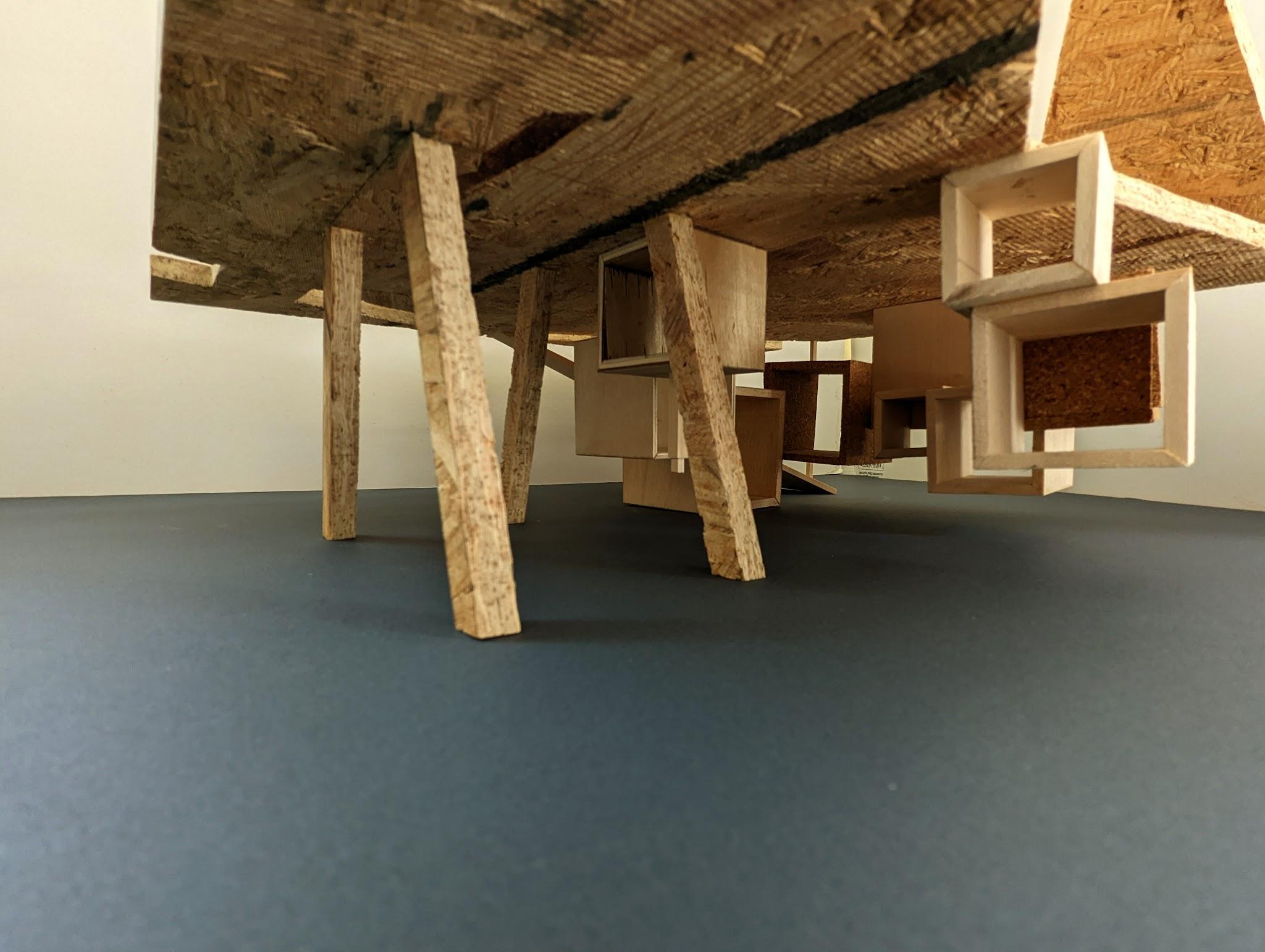
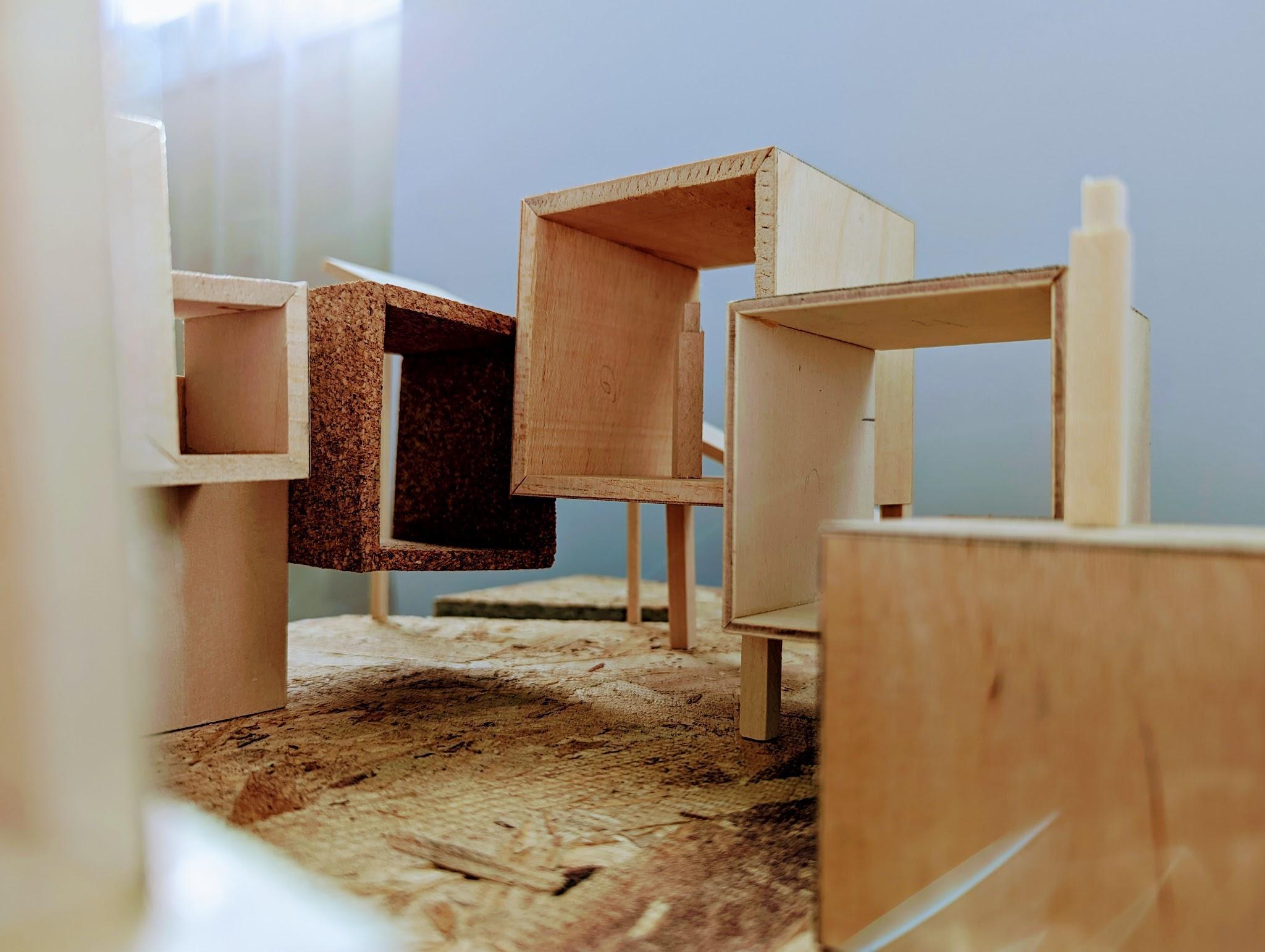
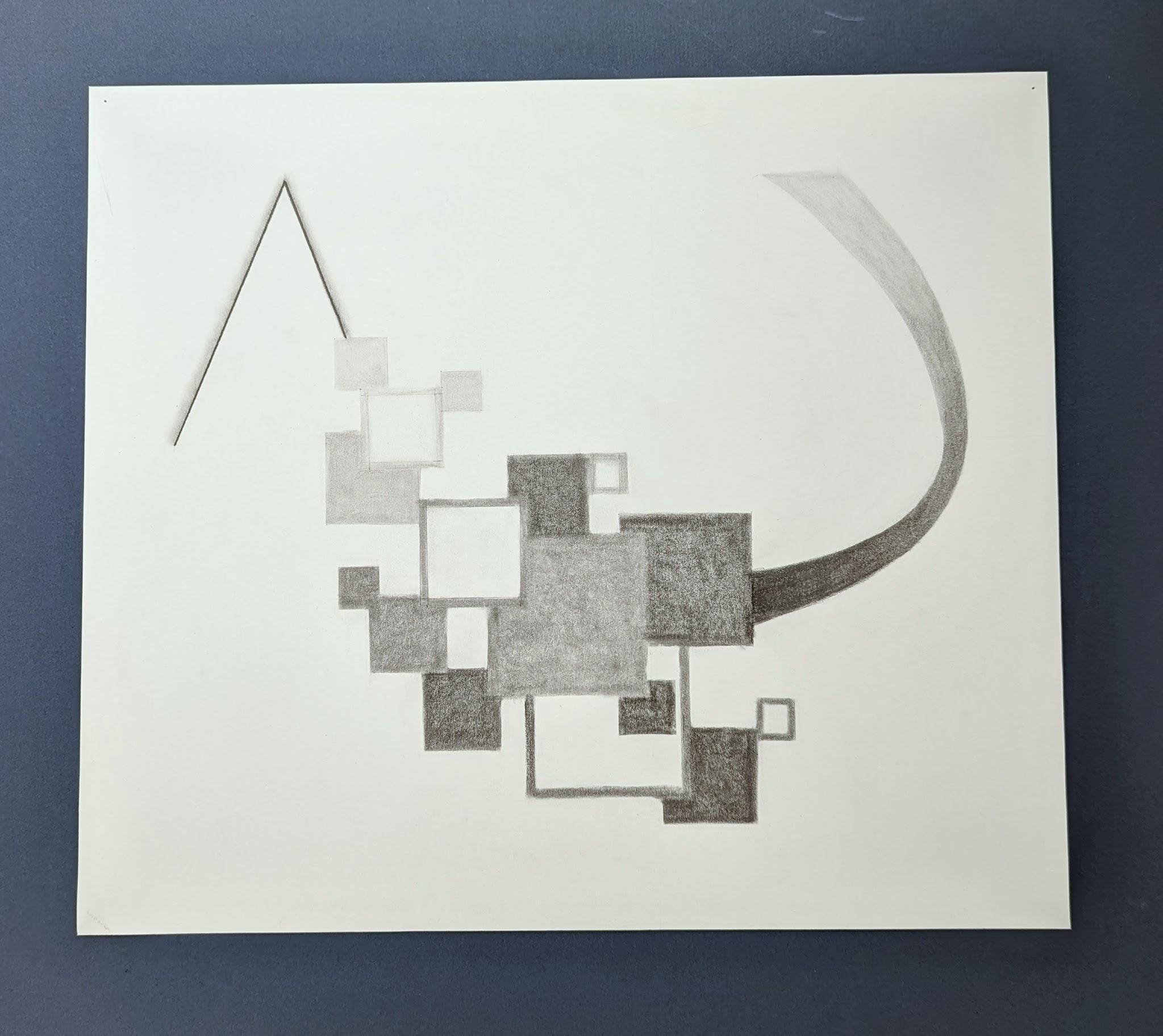
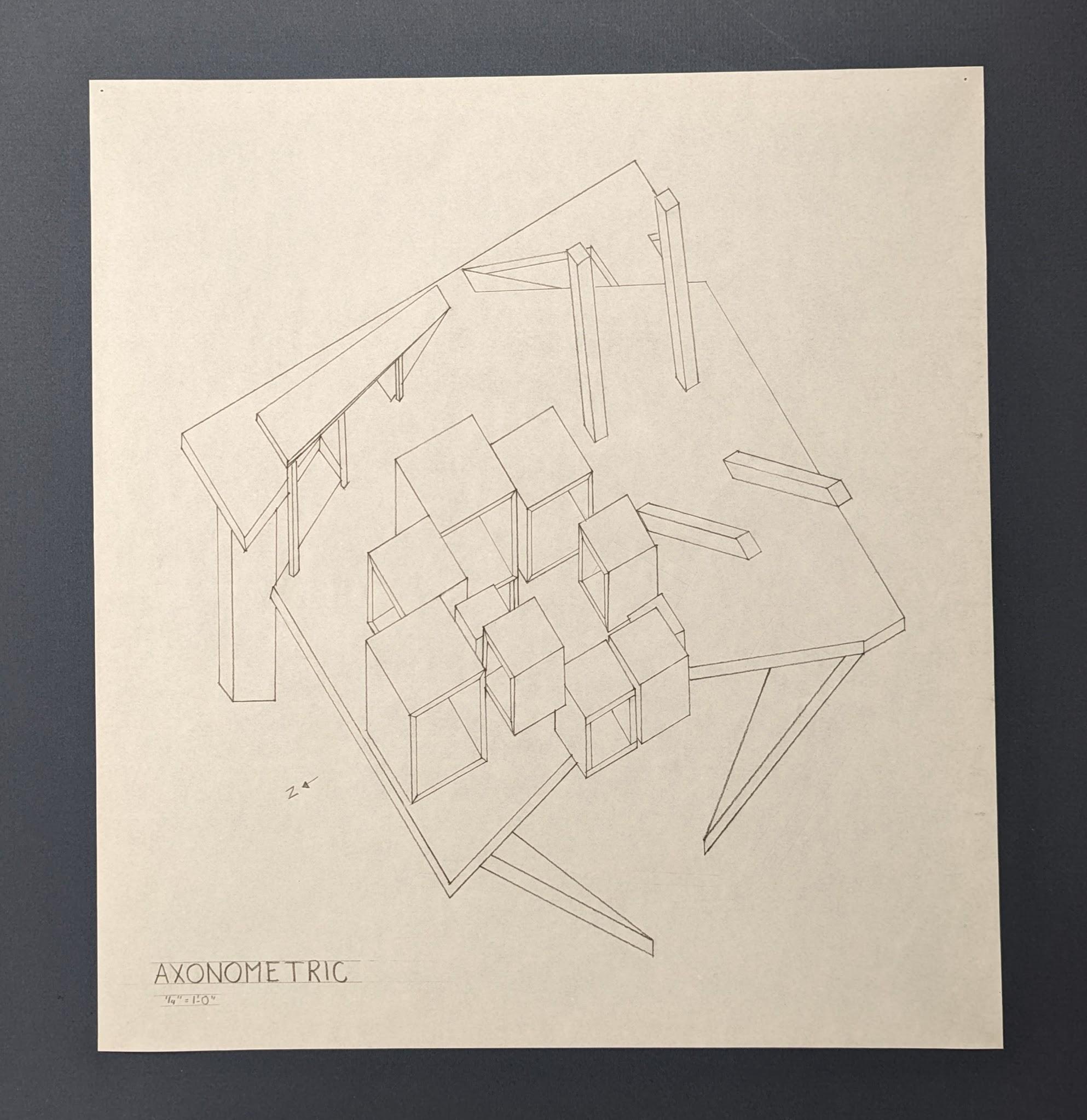
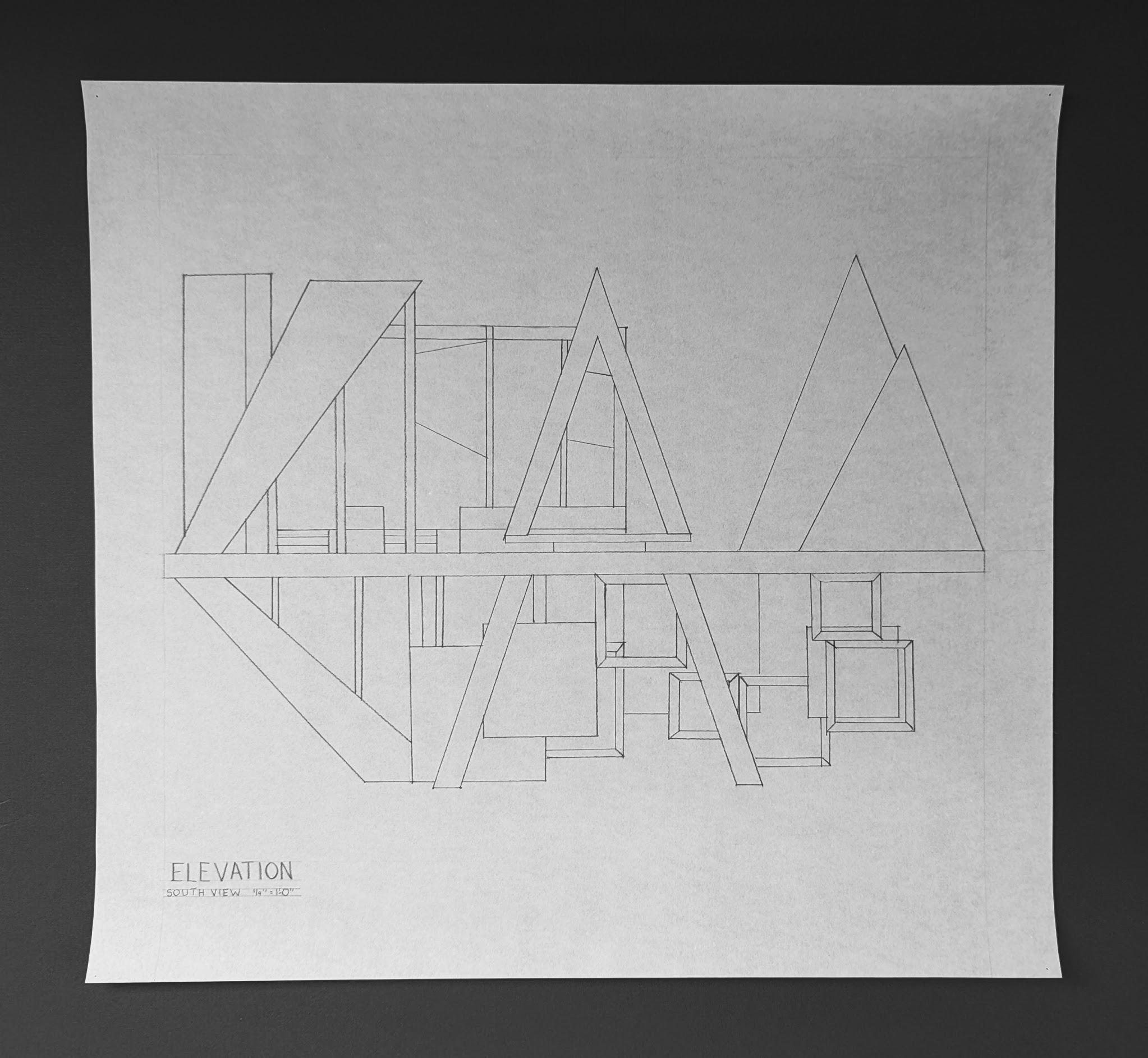
Significant Artist
This project focused on researching and exploring the work of an artist. The artist chosen was the UN sustainability goals. These 17 goals provide a framework for many countries to improve their social, economic and environmental issues. Some goals that applies to designers are goal 7: affordable and clean energy, goal 9: industry, innovation, and infrastructure, & goal 11: sustainable cities and communities.
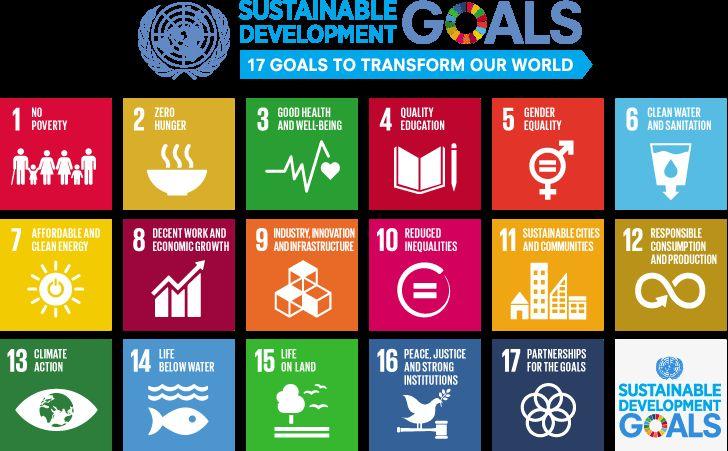
Cubes & Cylinders
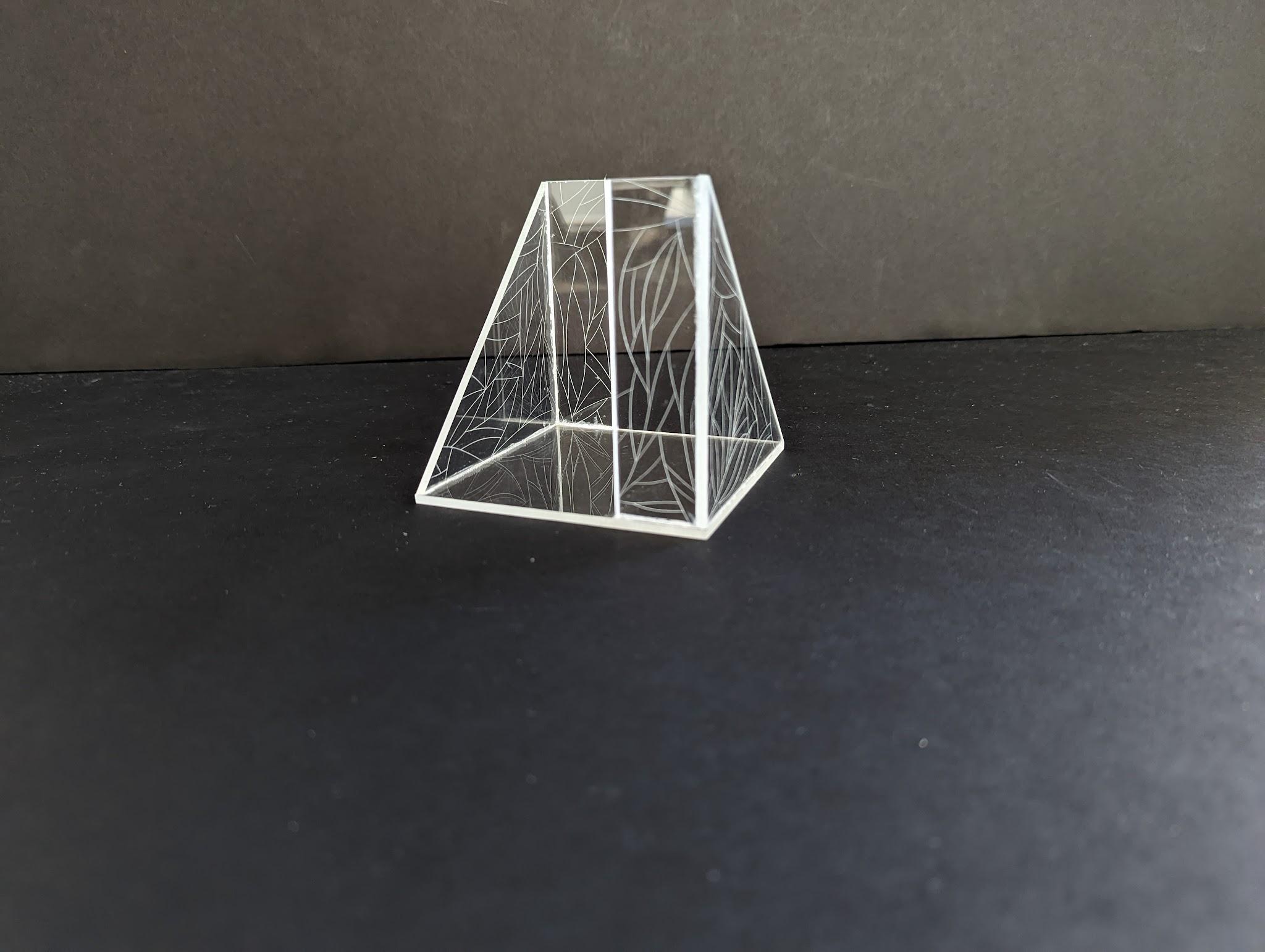
These were a series of exercise in constructing various cubes and cylinder from a variety of materials. These materials included chipboard, cardboard, foam core, wood, plexiglass, and concrete. There was much interest in exploring these materials and manipulating them to create different shapes and effects.
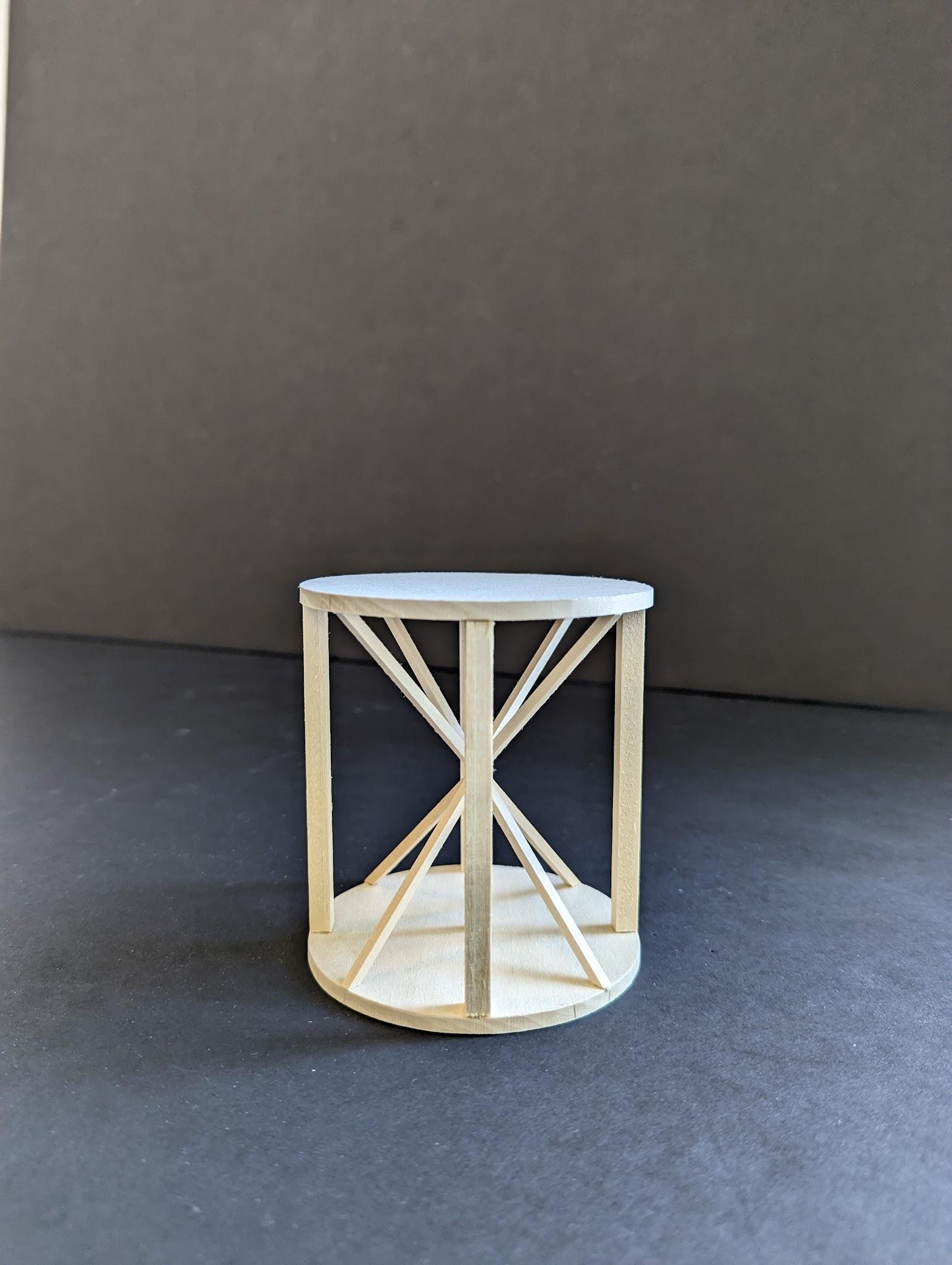
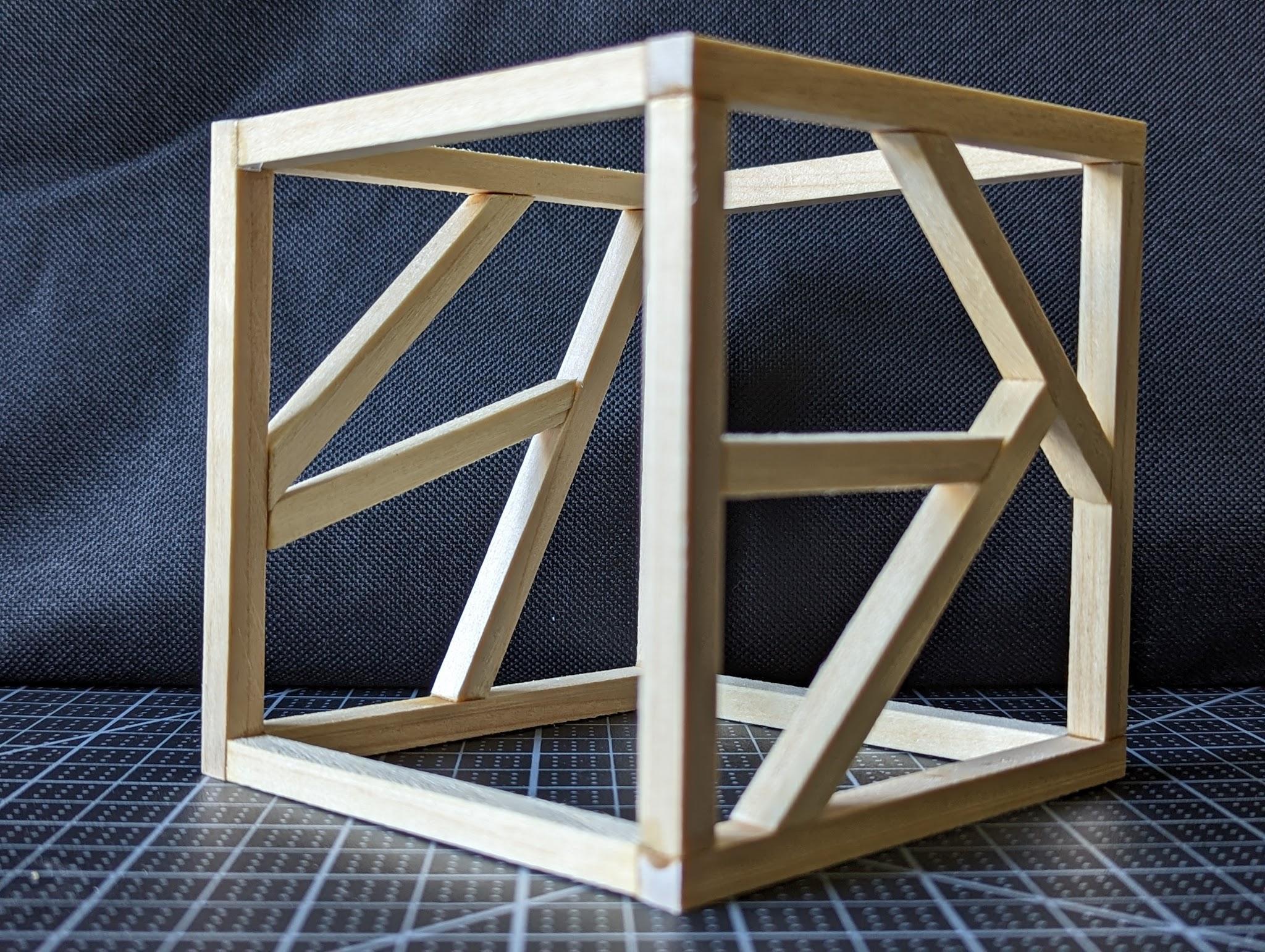
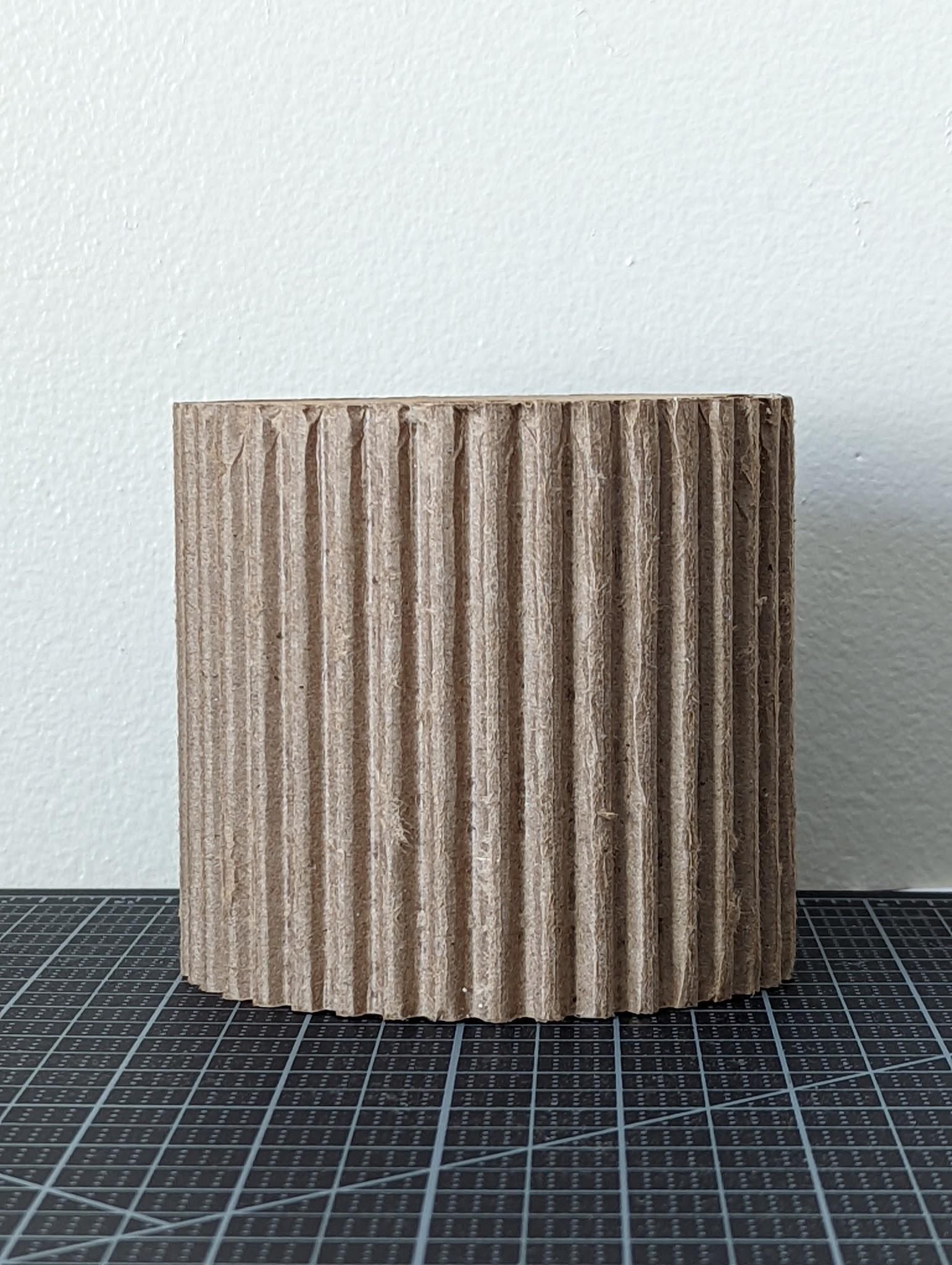
Semester Reflection
This semester has been an interesting one. I was very nervous and kind of confused when we started class. This is shown greatly in my cubes and cylinders.
At first, my models and drawing were clumsy. However, as they year progressed, I learned to hone my skills and become better at displaying my ideas through the drawings. My models became more precise and my drawing clearer and accurate. I also noticed my ability to create many fine details in my models.
Also, this semester has expanded my perspective and spatial awareness. The various projects like the visual hierarchy project taught me to expand my thought process to go from 2D to 3D. It also taught the important lesson of letting things go when they do not work out. I learned to change my ideas when things went wrong.
I learned much during these 3 months. There were times that were difficult and others that were fun. I learned that I am very precise with my models and drawings and focus much on the important details. I hope to expand on my abilities and continue to learn more about myself and my style of design.
